World's Best Vegetable Gardening Ideas
The rekindled interest in 'grow your own' has got us all searching for vegetable garden ideas. From tomatoes and herbs grown in pots by the back door to neat allotment-style rows all brimming with produce, there are ideas for every homeowner and every plot.
However, it can seem daunting, particularly if it's something you've never tried before. But have no fear, it's actually very easy to start your own vegetable garden. Size, space and aspect all play a part in influencing which vegetable garden ideas will work best in your space, but remember there are no hard and fast rules – simply choose the ideas that work best for your chosen vegetables and space.
'You can mix vegetables, fruit, herbs and flowers, including edible varieties, all jostling together in a tapestry of colors and shapes, in segregated rows or blocks, or as an ornamental potager, in a geometric pattern of your choice,' suggests garden expert Leigh Clapp.
See: Garden ideas – inspiration and ideas for outdoor spaces
1. Building raised beds opens up a host of vegetable garden ideas
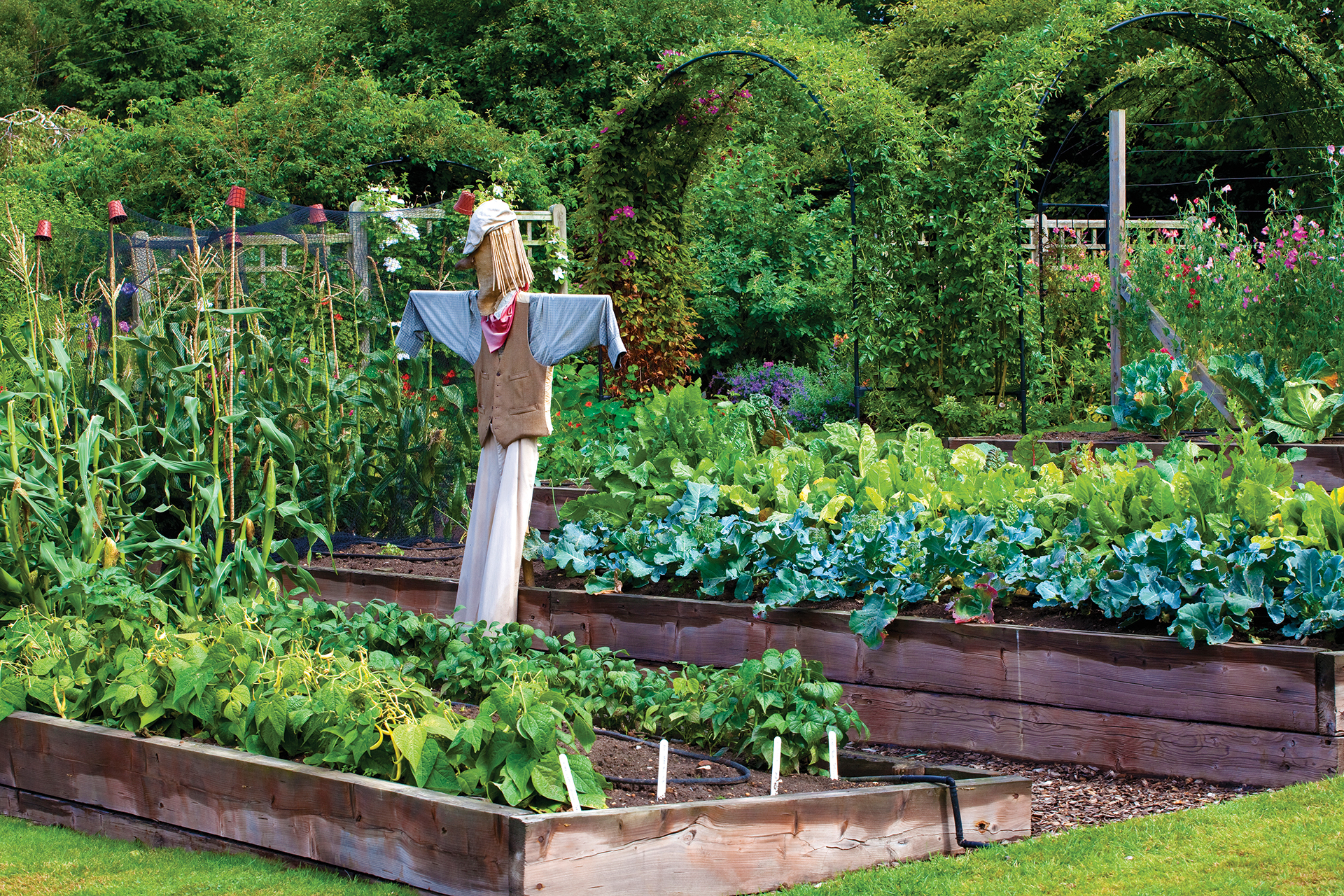
(Image credit: Future/Leigh Clapp)
More versatile than planting straight into the ground, raised beds offer a host of excellent vegetable garden ideas. They also give you greater control over soil type, condition and nutrients, meaning you can produce a bumper crop of your favorite fruits, vegetables and herbs.
Monty Don is also a fan of raised beds, having added many throughout his gardens at Longmeadow. In this video for BBC Gardener's World, he praises their benefits for vegetable gardens, as they 'improve drainage enormously, warm up quicker in spring, and mean you can focus all your energy into a very contained area.'
See: Kitchen garden ideas – easy ways to get started
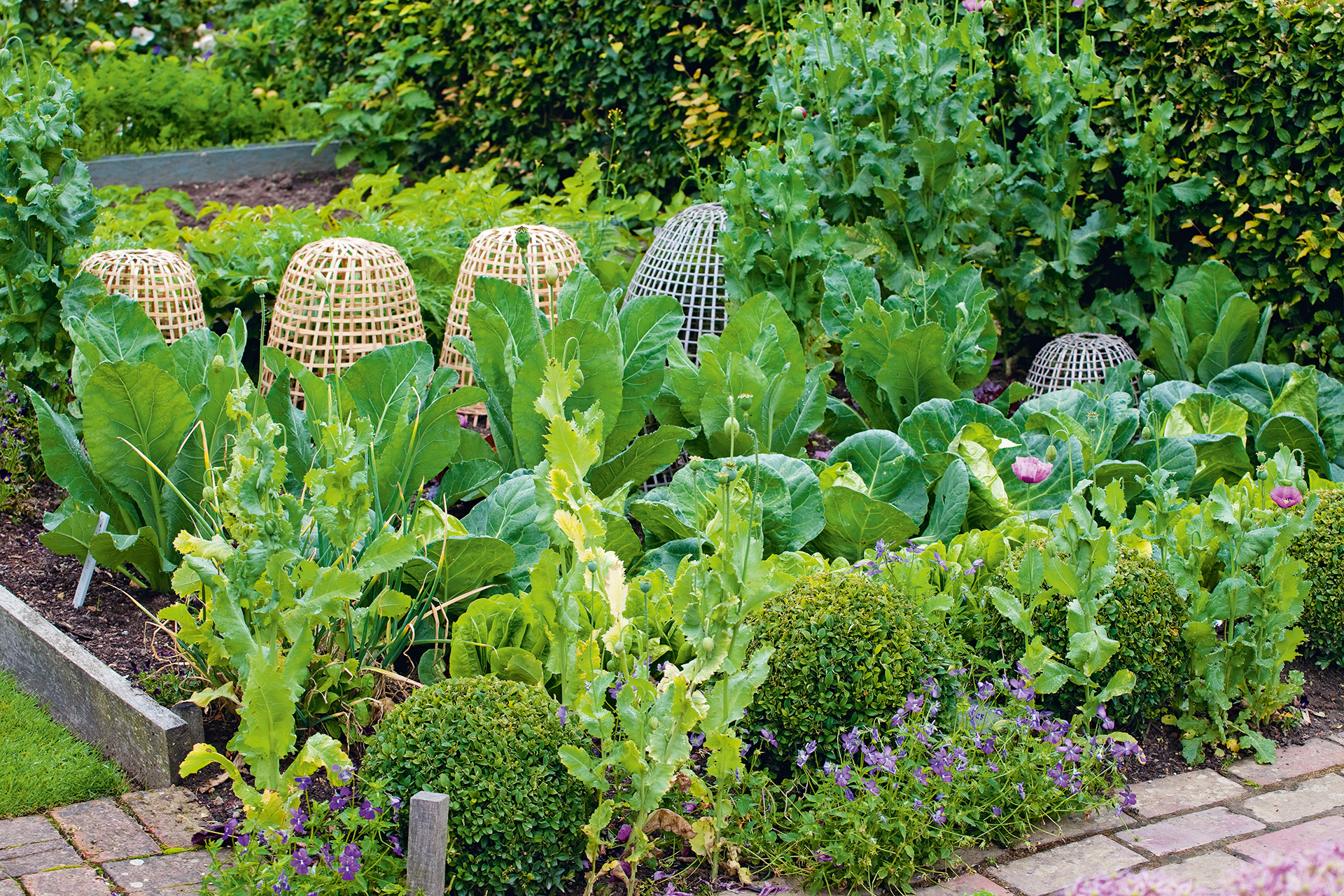
(Image credit: Future/Leigh Clapp)
When choosing or designing your raised beds, it's important to think about the height and the depth. Do you mind bending or sitting down to garden or would you rather be standing?
Also consider what you are growing. If you're growing root vegetables you will need deep soil and therefore a deeper raised bed, whereas leafy greens have smaller roots and so don't need the same depth.
'Raised beds allow you to easily ensure the plants you are growing have the soil they like. You can add more sand for drainage, more manure for heavy feeders,' advises Rob Smith, Horti Expert at Organic Catalogue. 'They are also easier to dig and better on your back as you don't need to bend as much; ideal if you are a wheelchair user or suffer from back pain.'
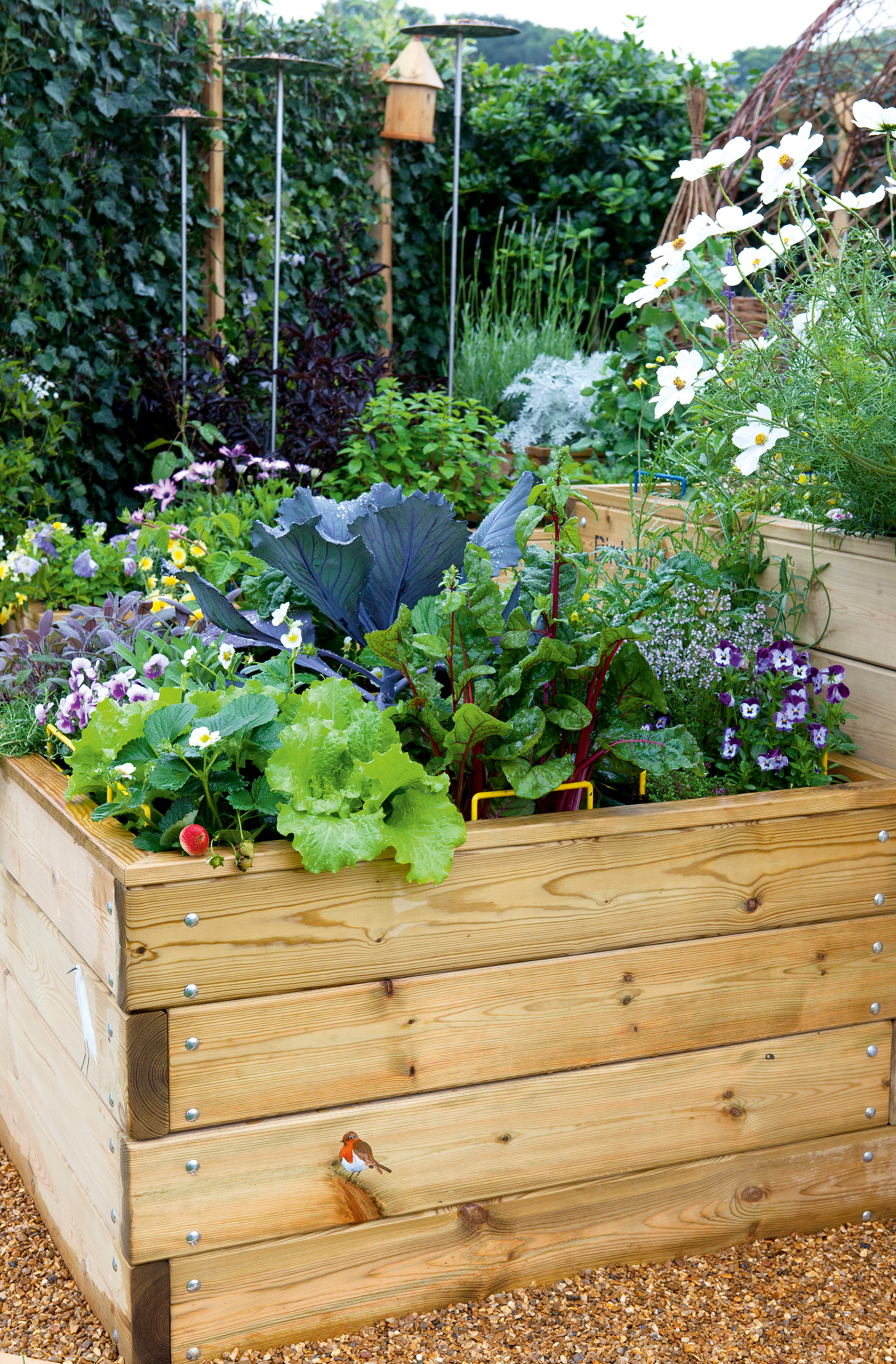
(Image credit: Future/Leigh Clapp)
'Raised beds planted in the center of a yard with access to all sides, follow the same guidelines as an in-ground garden. For a raised bed against the side of a house, plant taller plants in the back and shorter plants in the front,' suggests Amy Enfield, Horticulturist for Bonnie Plants.
- See: Raised bed garden ideas – build raised planters for productive, low-maintenance gardening
You can plant any vegetable you like in a raised garden bed. From root vegetables like carrots and parsnips in deep raised garden beds to radishes, lettuce and spinach in shallower beds.
'Build your own raised beds from locally sourced, reclaimed or recycled timbers, including cut logs, ladders and scaffolding planks,' advises Leigh Clapp. 'However, don't use treated pine as the chemicals can leach into the soil. There are many online guides for how to make them.'
2. Make use of vertical space in small spaces
Growing plants vertically is a great way to maximize the productivity of your plot. It's well known that some vegetables, like peas and beans, require structural support to grow but you can also grow larger vegetables like pumpkins up a support.
Pumpkins take a lot of space to grow horizontally, which is a problem if you're short of room, but growing them up a support means you can have a bumper crop while also growing other vegetables in the surrounding beds.
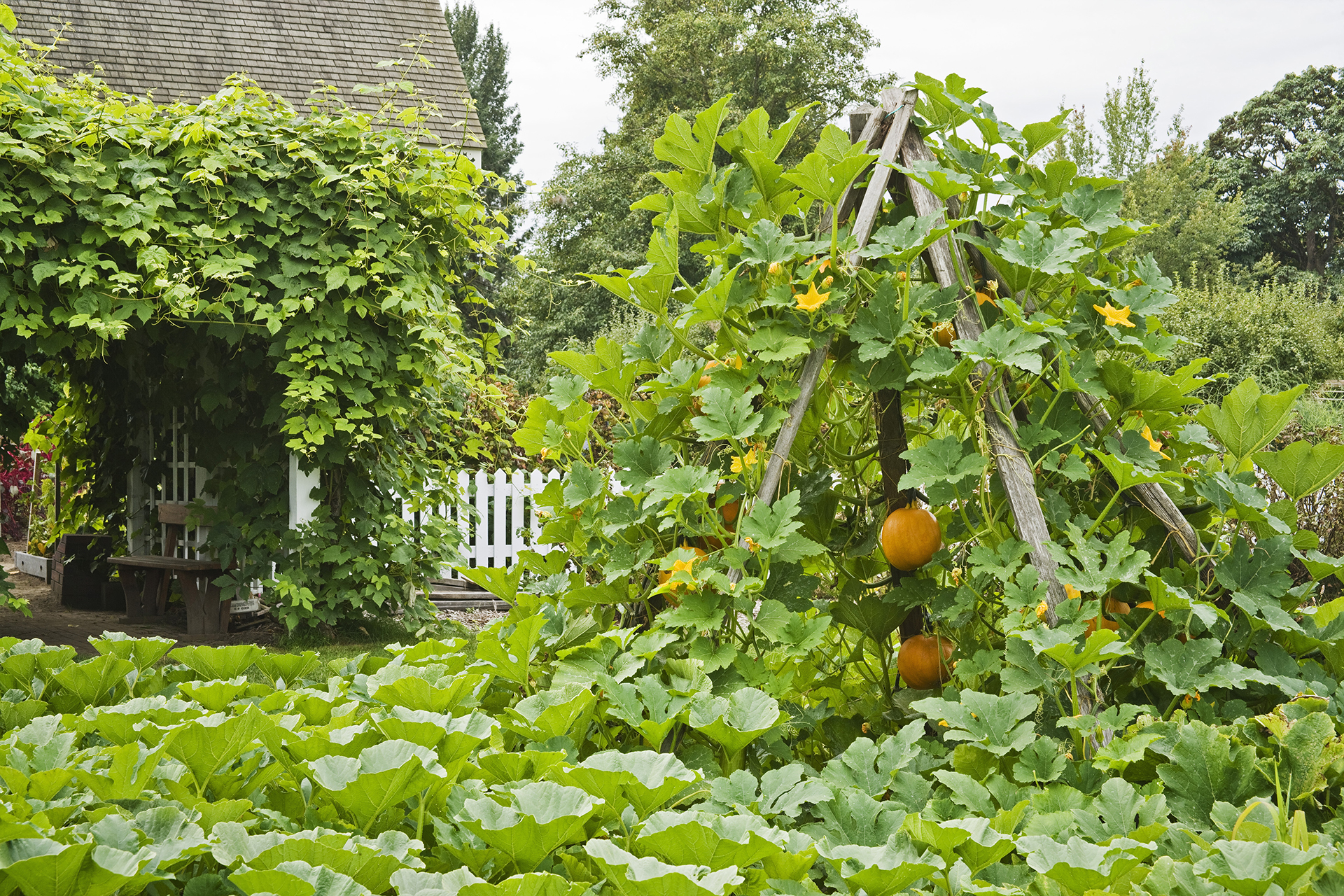
(Image credit: Getty Images)
Incorporating trellis and obelisks into your vegetable garden also adds visual interest to the space, especially if you opt to grow plants with pretty flowers like beans, peas or even sweet peas. 'Make your own natural supports with flexible stems of willow, hazel or birch – using jute or wool twine is also a sustainable choice,' advises Leigh Clapp.
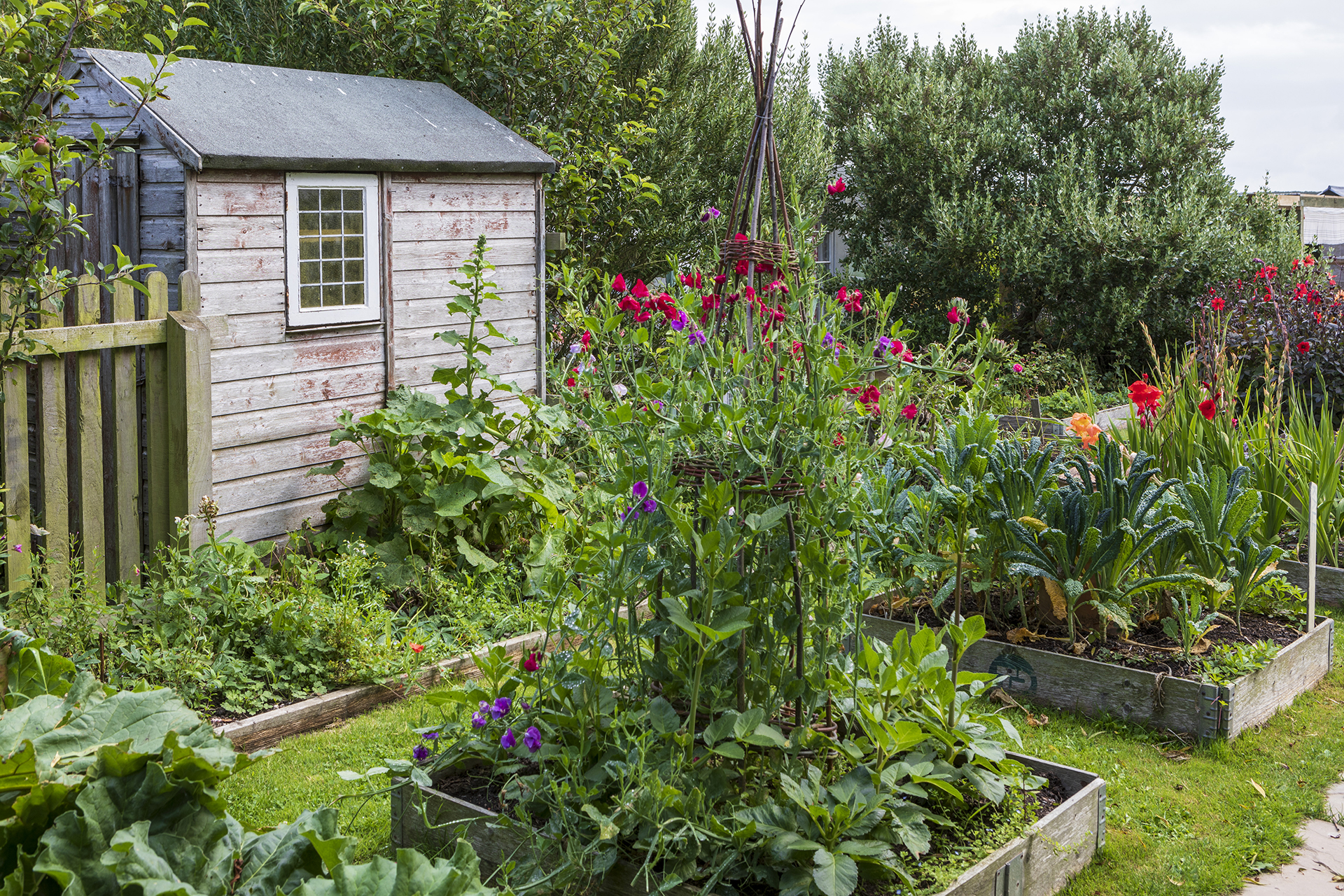
(Image credit: Future/Mark Bolton)
Much more aesthetically pleasing than a bare fence, climbing vegetables up a trellis is the perfect way to maximize space, productivity and variety in your garden.
An added benefit is that the flowers from the vegetable plants will also help to encourage pollinators to your plot – a must if you want a healthy harvest come fall.
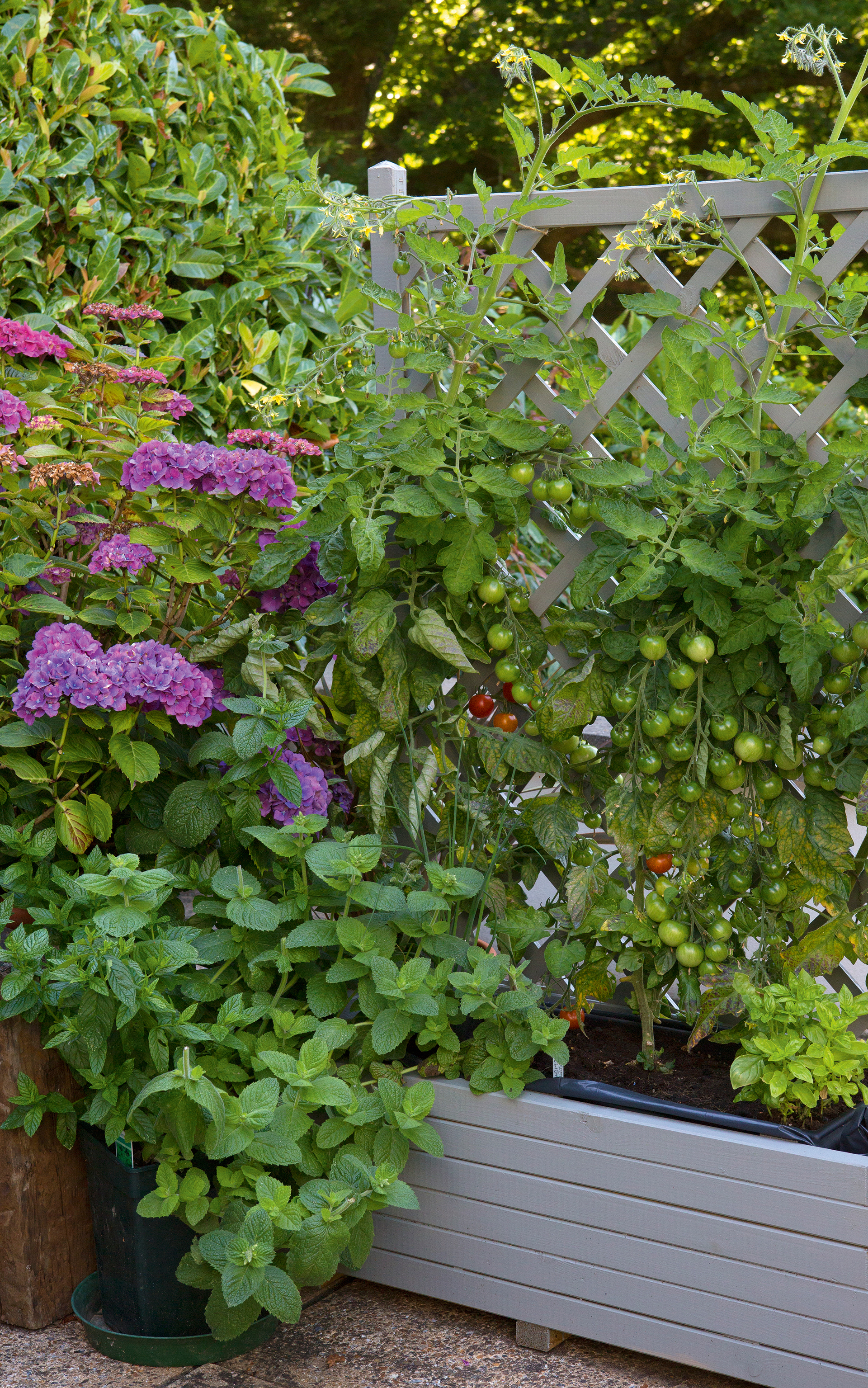
(Image credit: Future/Leigh Clapp)
- See: Small vegetable garden ideas – grow a bumper crop in a tiny backyard
3. Don't forget to factor in pathways
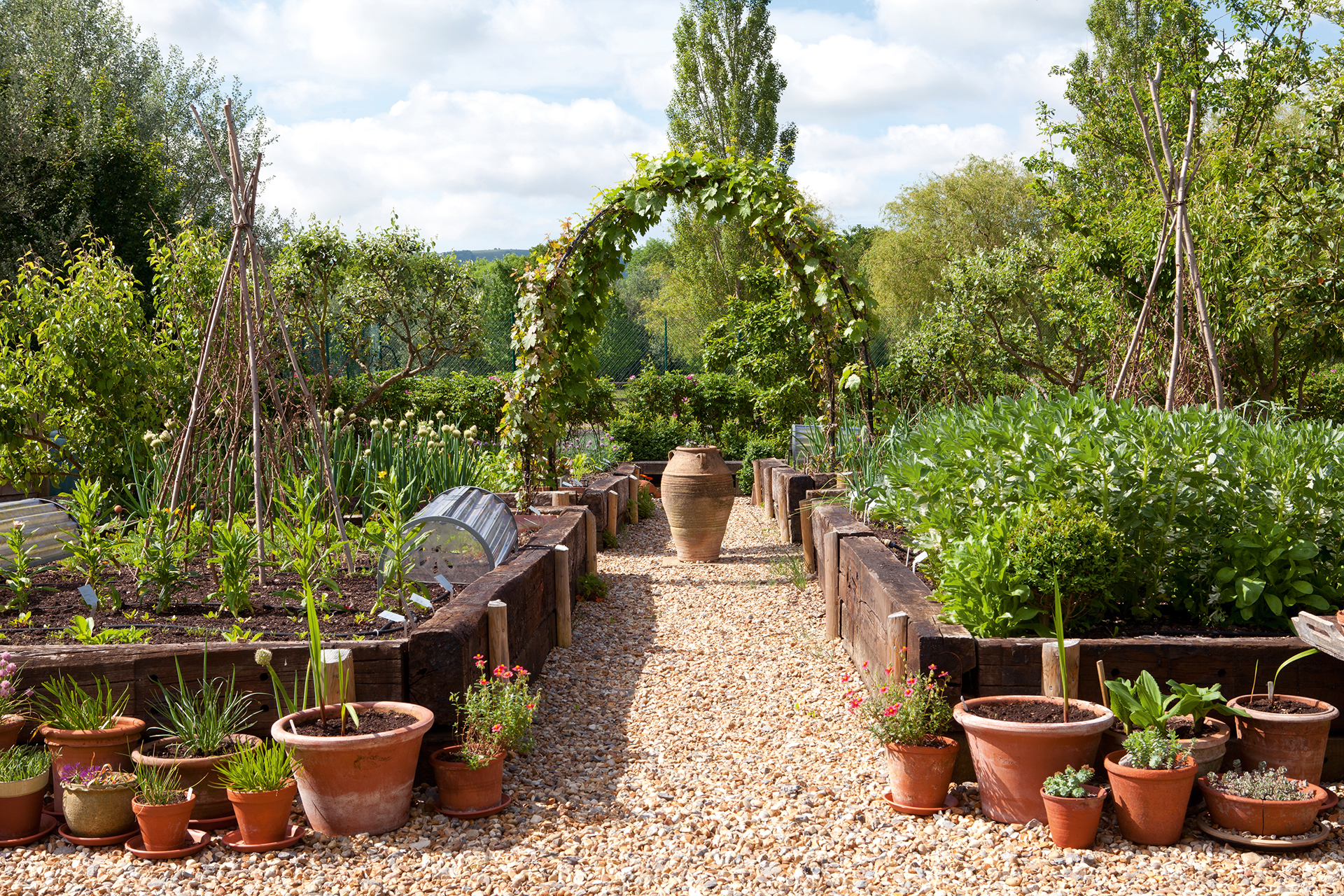
(Image credit: Future/Leigh Clapp)
Access is an important part of vegetable garden design as unlike a flower border, you need to be able to reach all the plants for tending and harvesting. As well as aiding access, a path also helps in creating an organized vegetable garden.
If you're wondering 'How can I make my vegetable garden more attractive?' then adding borders and a path will instantly elevate the plot, giving it structure and order.
The variation of materials you could choose for your path can create different effects in your vegetable garden. Pebbles are a great choice for a laid back cottage look – pair with arches covered in floral blooms and large terracotta planters to embrace the romantic potager aesthetic.
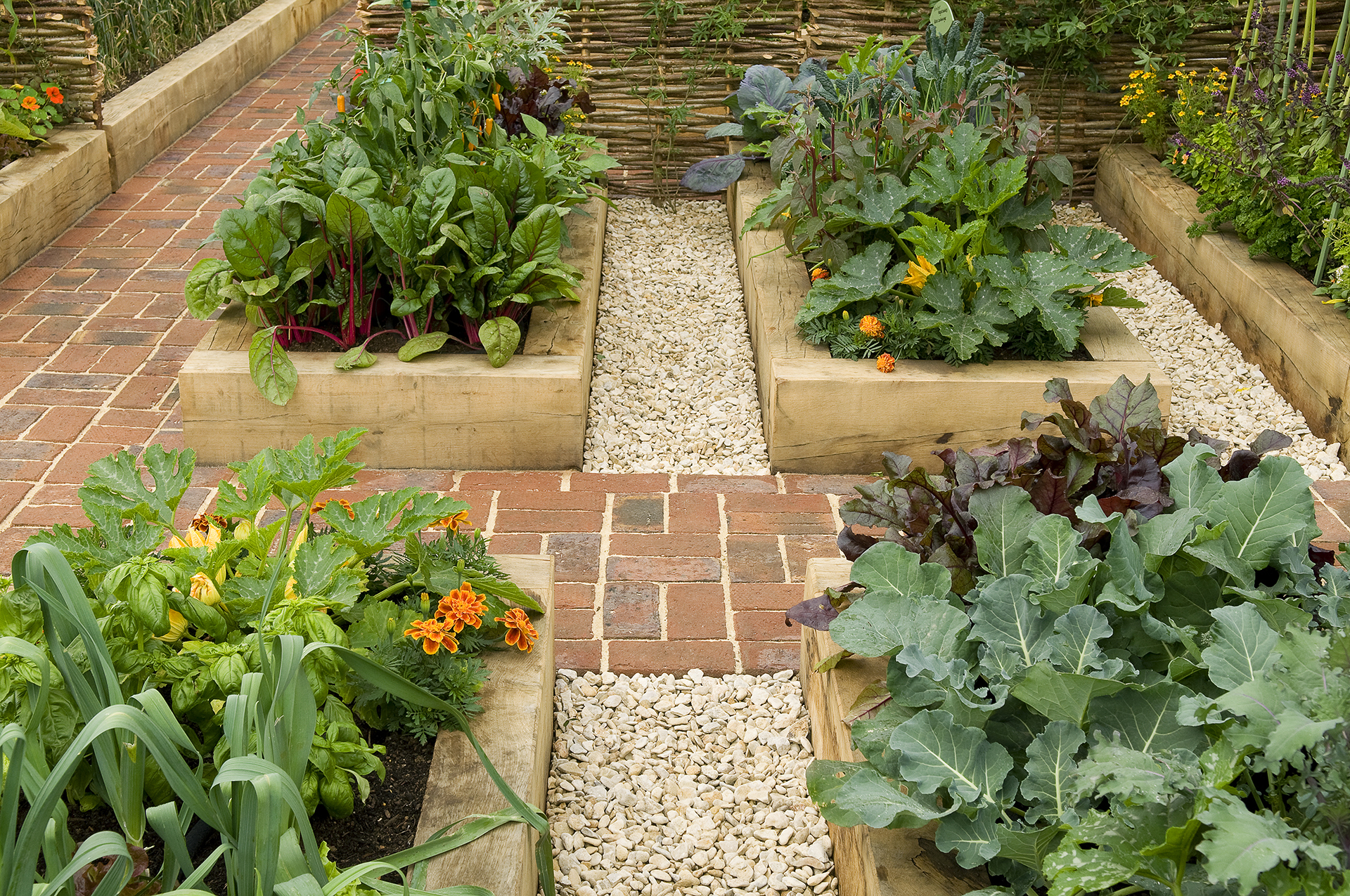
(Image credit: Getty Images)
Brick paths, on the other hand, create a more formal and organized look while still evoking a natural garden feel. The red shade of the bricks also beautifully highlights the deep green of the vegetables' foliage. Pick reclaimed bricks, from a salvage yard or a even a garden clearance, to give your pathway a rustic, lived-in feel that will perfect compliment the garden's natural charm.
An additional benefit to building a path is that it 'makes it easier to spot and dispatch the pests,' recommends Leigh Clapp – which can only ever be a good thing.
See: Garden path ideas – create a beautiful walkway with the right materials, edging and plants
4. Plant vegetables in amongst the flower borders to create a beautiful display
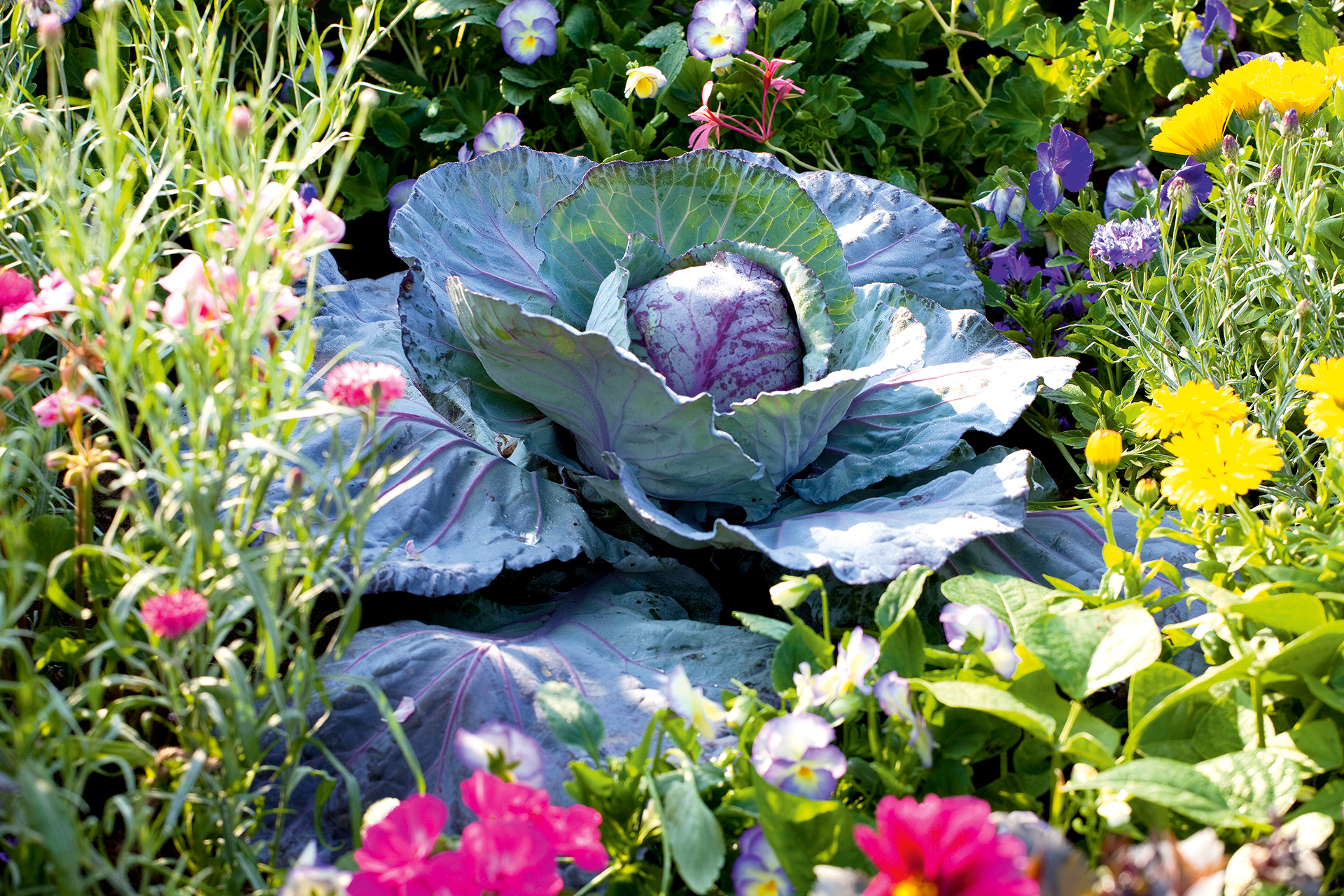
(Image credit: Future/Leigh Clapp)
If you want to know 'how can I hide my vegetable garden?' Then you'll be glad to know that you can easily do so in amongst your flower border.
With pretty flowers, interesting leaves, and available in a whole spectrum of colors vegetable plants have a surprising amount to offer to the borders.
Red cabbage is a particular favorite with its large bluey-green leaves veined with purple, they have even been seen added to bouquets and planters to add interest and texture to the arrangements. Plus you get the extra benefit of being able to harvest and eat them at the end of the summer months.
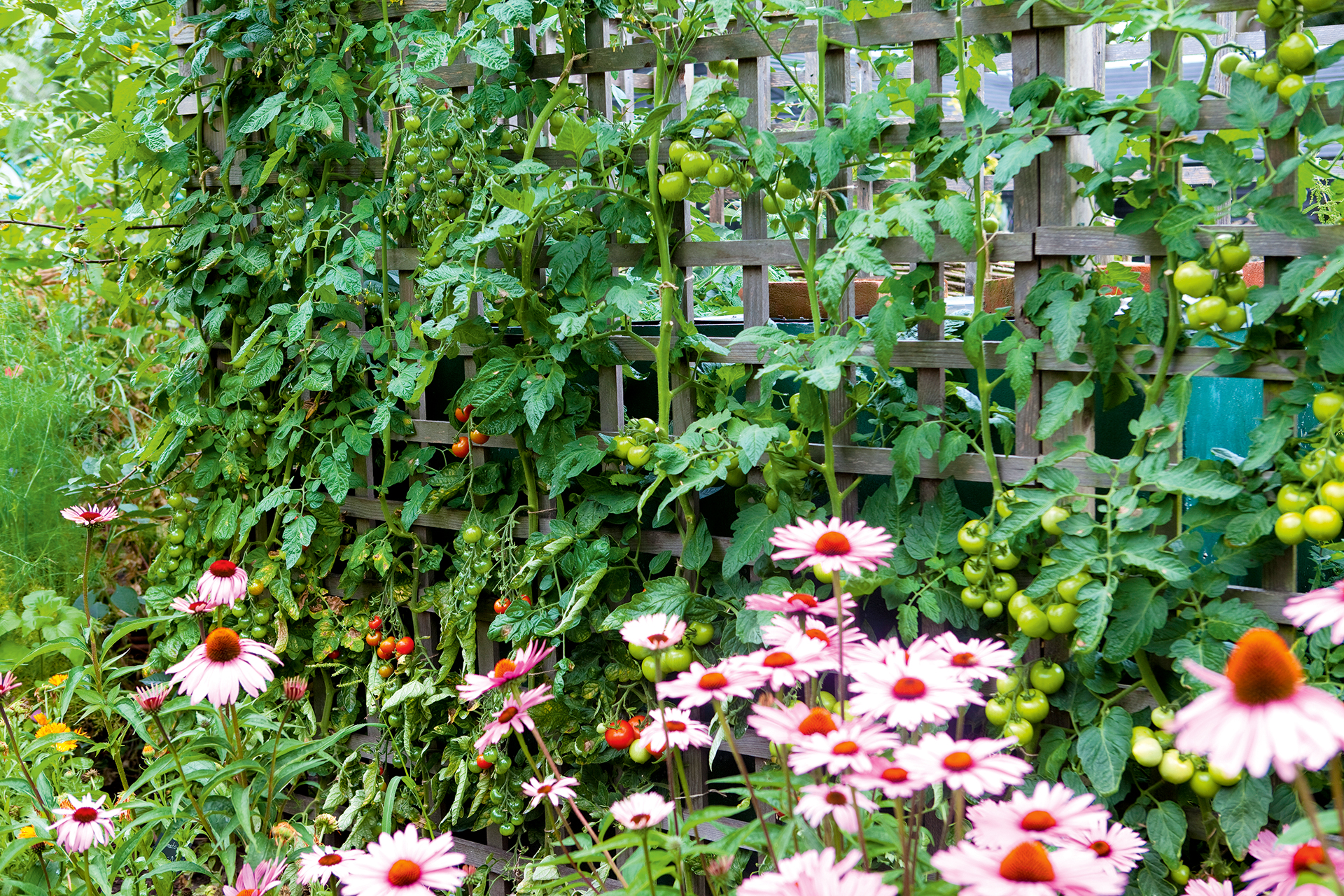
(Image credit: Future/Leigh Clapp)
5. Add a seating area to your vegetable garden
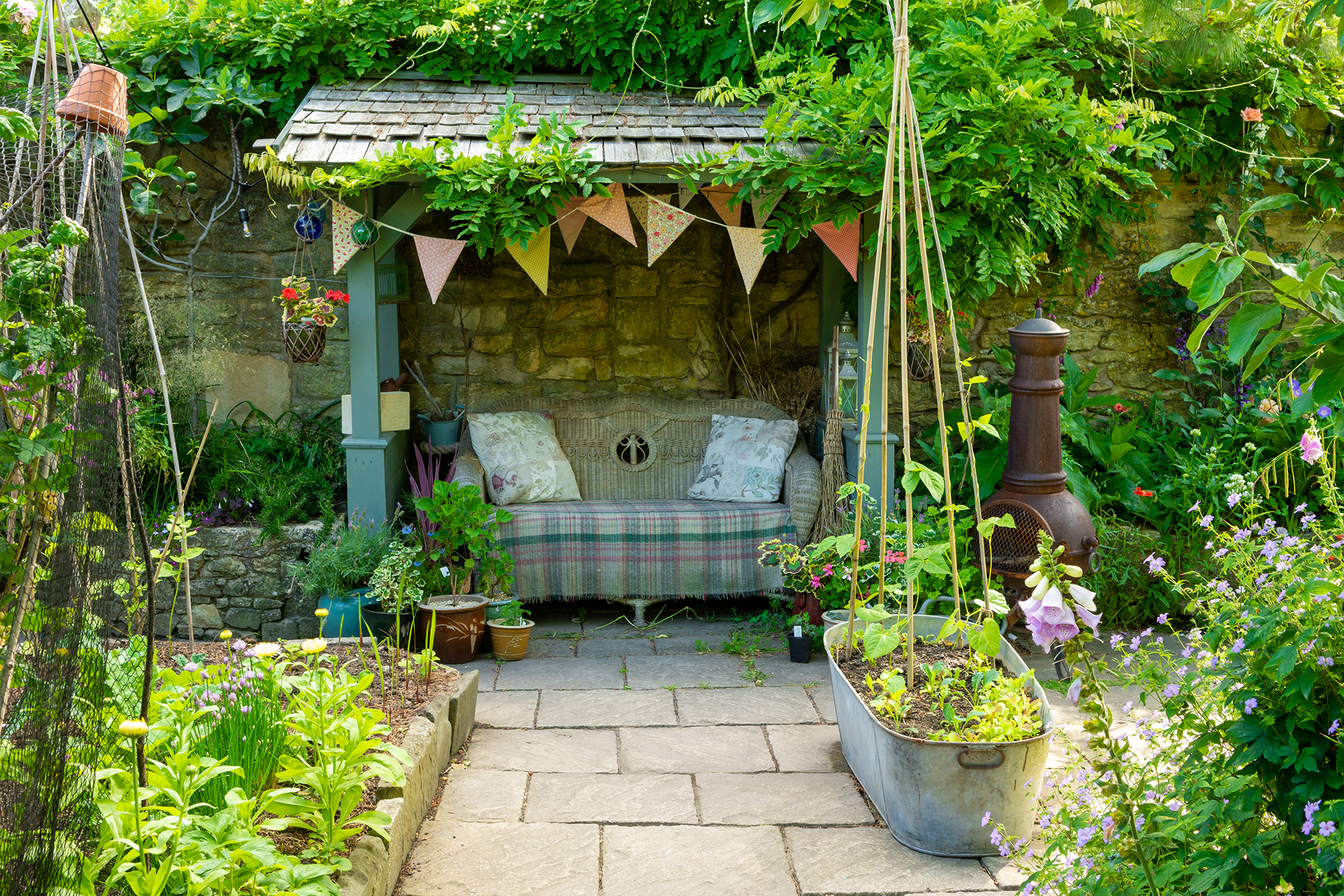
(Image credit: Peter Chatterton)
From researching vegetable garden ideas to creating a vegetable garden that is brimming with produce and character is undeniably hard work.
Therefore it is important that you also take time to enjoy your space. Incorporating a dedicated seating area, whether that's a bench or arbor into your vegetable garden ideas gives you a space to relax, letting you take a minute to enjoy the beauty and productivity of your plot. It also provides a handy spot for that all important coffee break.
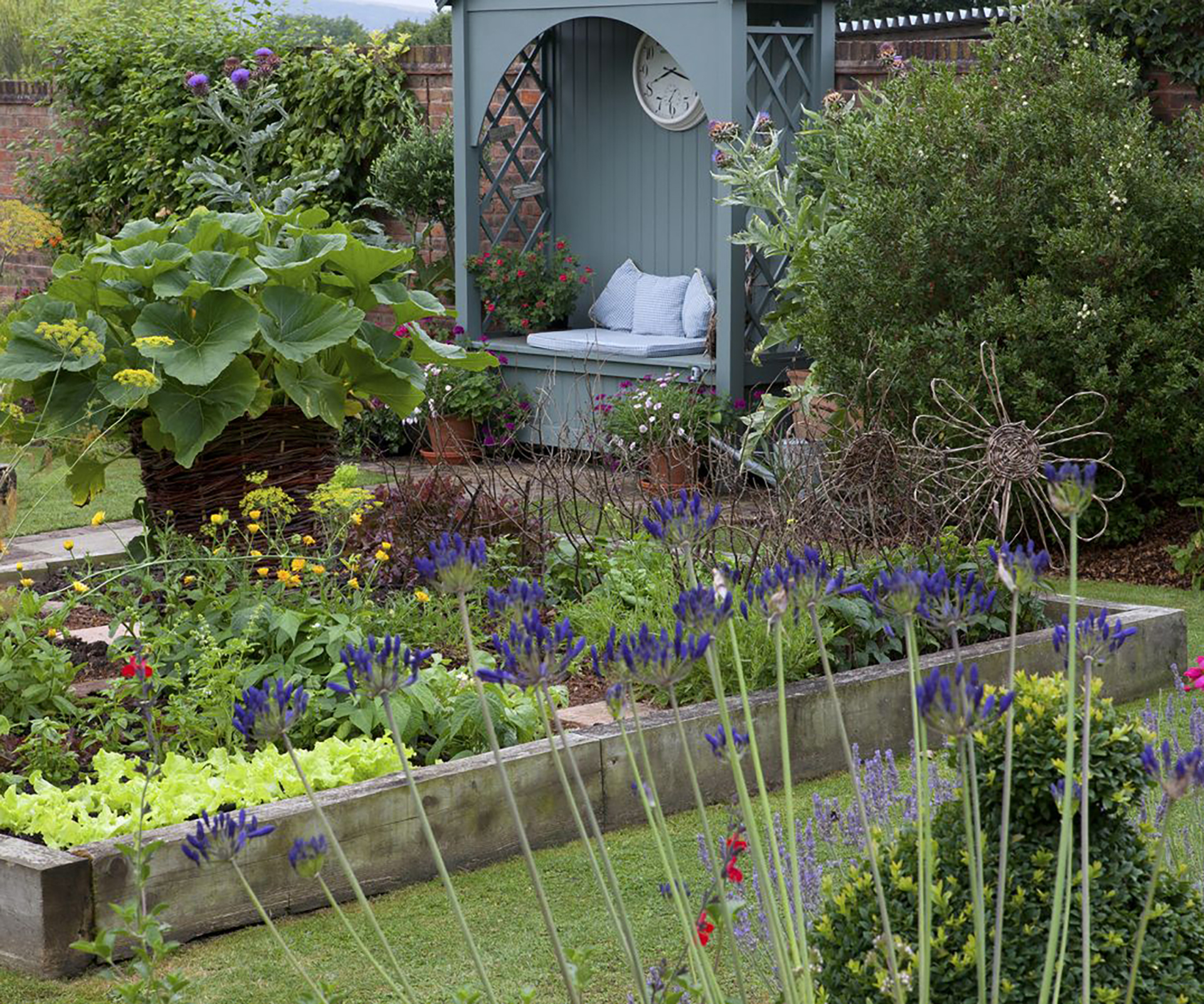
(Image credit: Future/Leigh Clapp)
6. Use edging to demarcate your vegetable garden
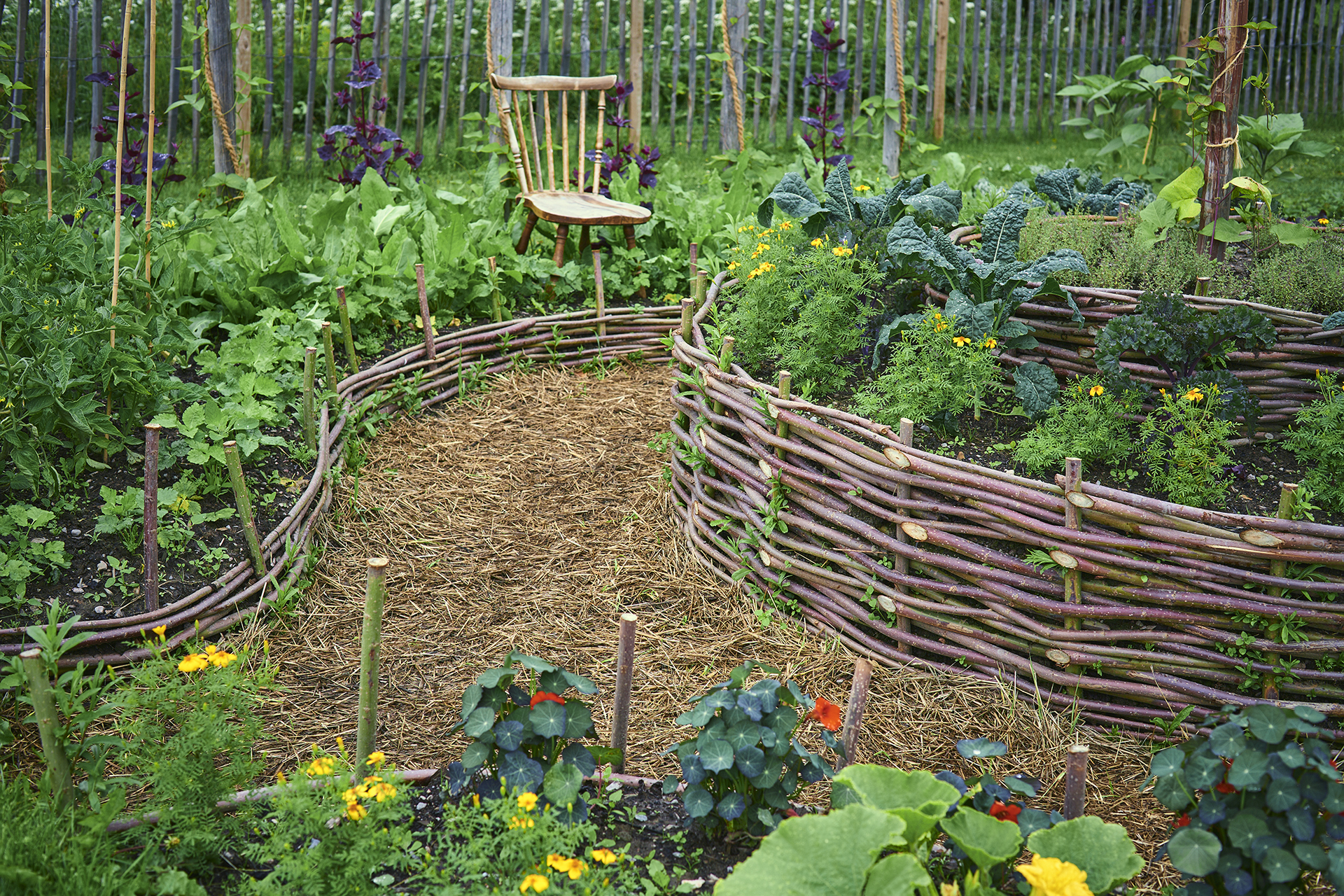
(Image credit: Getty Images)
Adding a border to your vegetable garden helps to demarcate the productive areas of your plot, making what can sometimes appear to be a rather disparate grouping of plants into a neat and tidy space. Borders can also help you to zone your vegetable garden and demarcate its pathways.
Opt for natural materials like woven willow, flagstones or bricks to complement your garden planting, letting the borders blend into the plot rather than stand out.
See: Garden edging ideas – for neat, tidy and decorative borders
7. Draw on quintessential vegetable garden ideas to create a productive kitchen garden
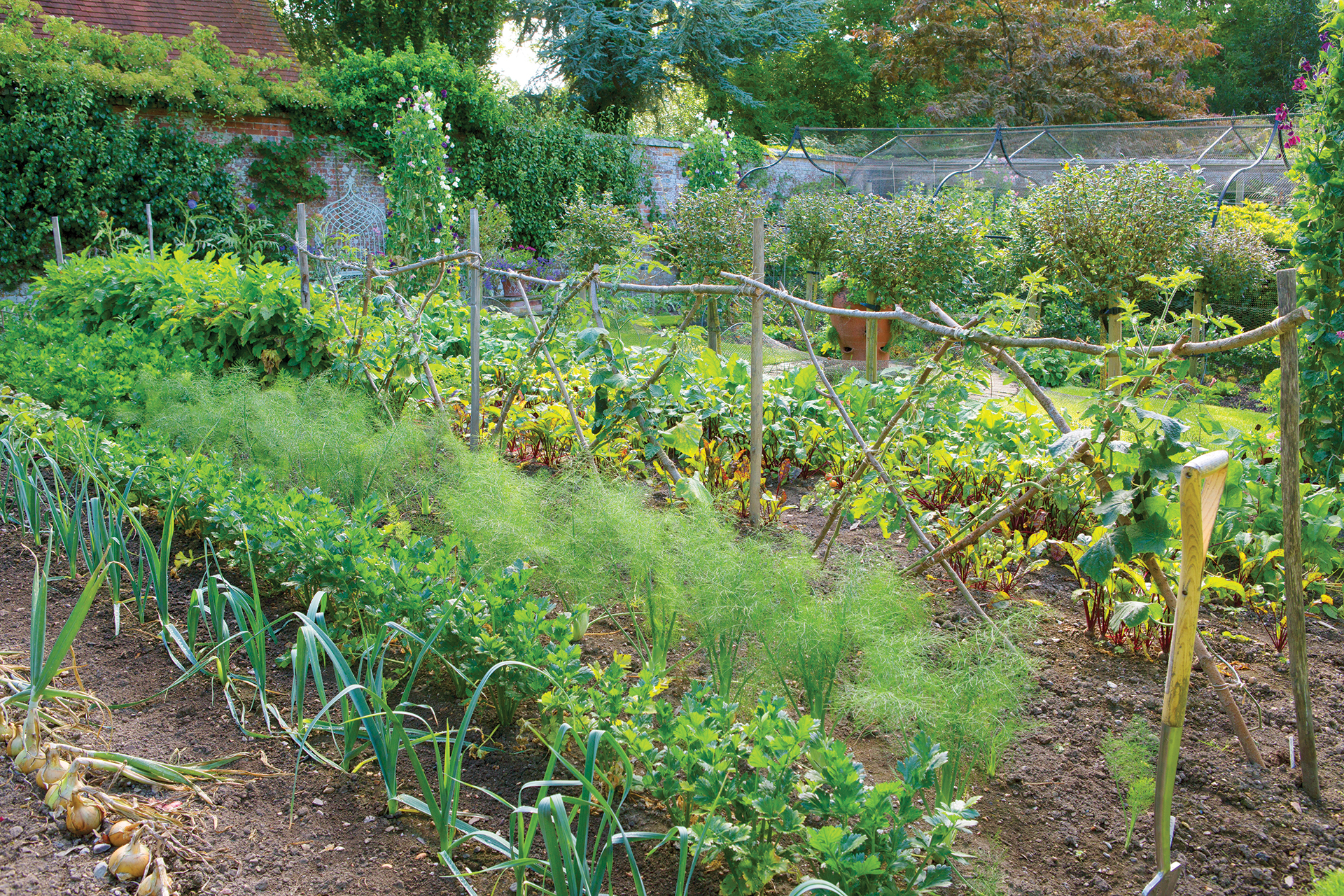
(Image credit: Future/Leigh Clapp)
Neat rows with lines of fluffy carrot tops, sleek flopping onion leaves and ruffled lettuce all work together to create the quintessential vegetable garden look.
One of the easiest vegetable garden ideas is to replicate simply demarcate a border - whether by turning over lawn or repurposing a pre-existing bed. Then rake the bed until the soil is very fine and crumbly, before planting your seeds or seedlings. Make sure you pick a plot large enough for you to grow all your favorite vegetables.
Consider planting your vegetable crops successionally – leaving a month or so between sowings – to ensure you have delicious fresh vegetables ready to pick throughout the whole summer.
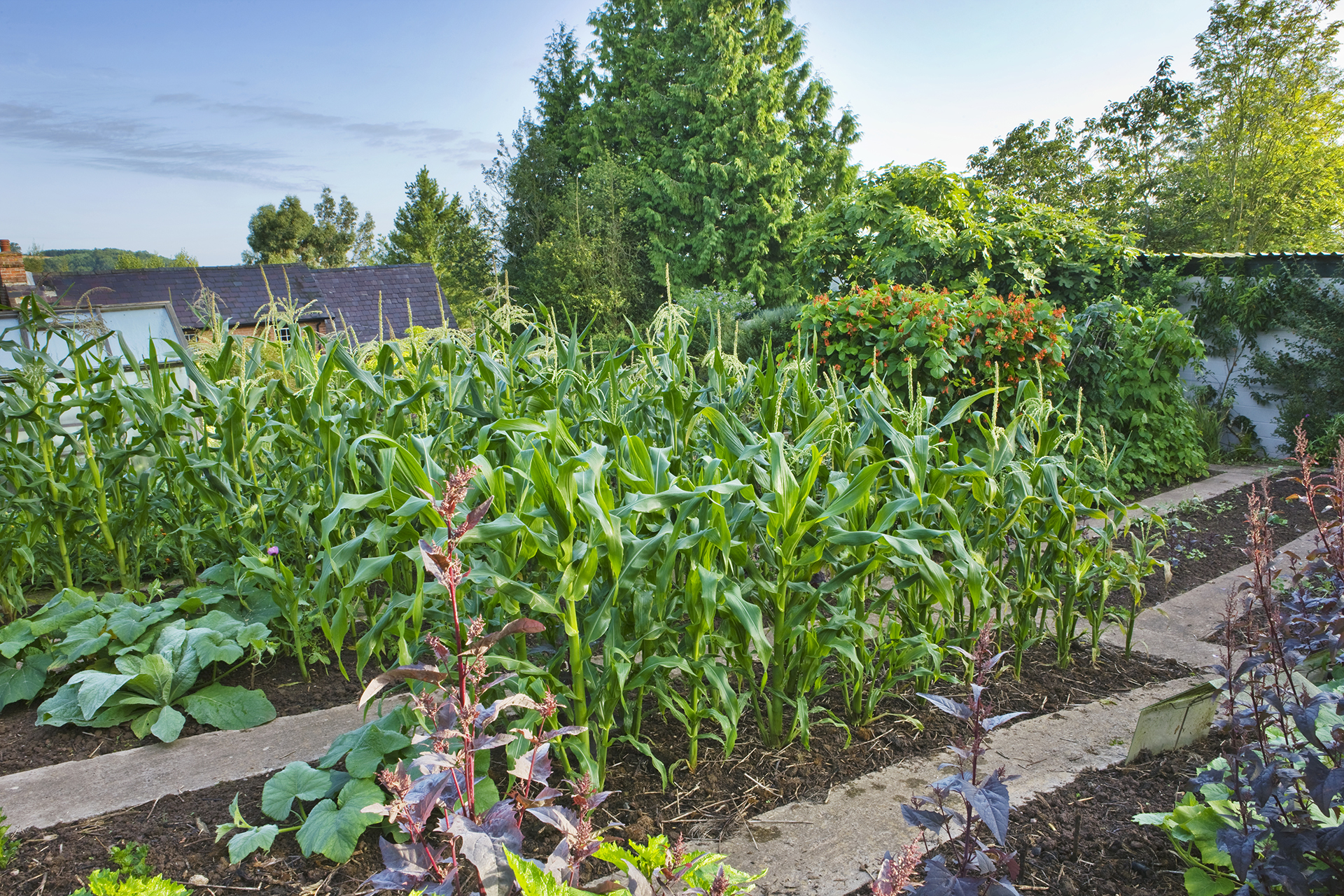
(Image credit: Getty Images)
If you opt for vegetable garden ideas like this one it is also worth considering rotating your crop. 'By rotating your crops and not planting the same family of plants in the same bed for the following two years, you can get bigger harvests and less problems,' advises Rob Smith, Horti Expert at Organic Catalogue
'Different plants use different amounts of nutrients from the soil, and by rotating them you can make sure the soil isn't depleted of what your plants need. I like to plant legumes (which leave nitrogen rich root nodules in the soil), followed by cucurbits (which are heavy feeders and like the extra food), followed by alliums of brassica; then the process starts again with legumes.
The general rule is not to plant the same think in the same bed for years as crops get smaller and pest numbers will increase.'
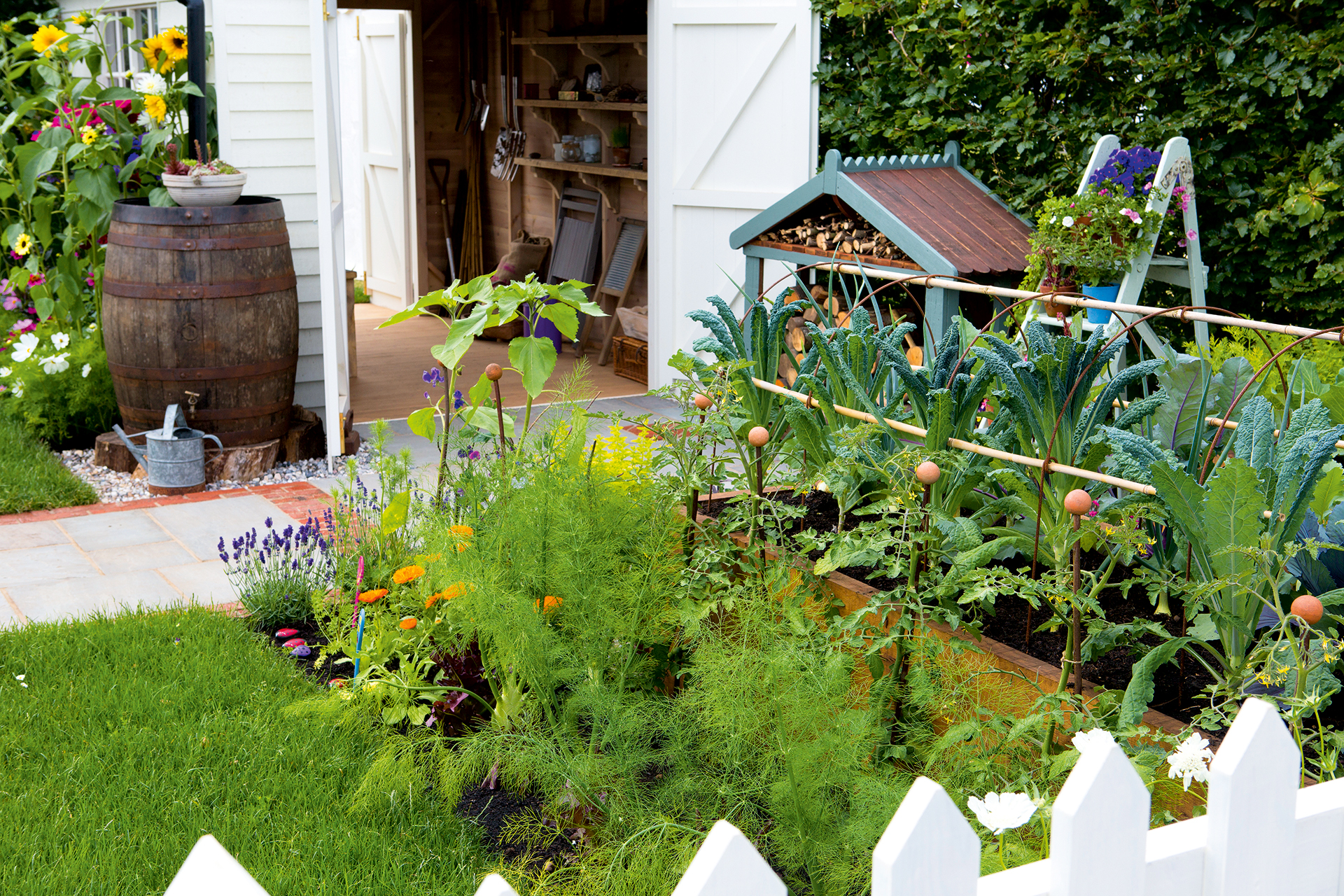
(Image credit: Future/Leigh Clapp)
You don't even have to have lots of yard space to create a vegetable garden. In fact you can even grow vegetables in your front yard. Simply cut a small rectangular border out of your turf and plant up with your favorite vegetables. Back the plot with a trellis and climb beans, peas or tomatoes to increase your mini plot's productivity and aesthetics.
8. Plant veg undercover for creating the perfect growing conditions
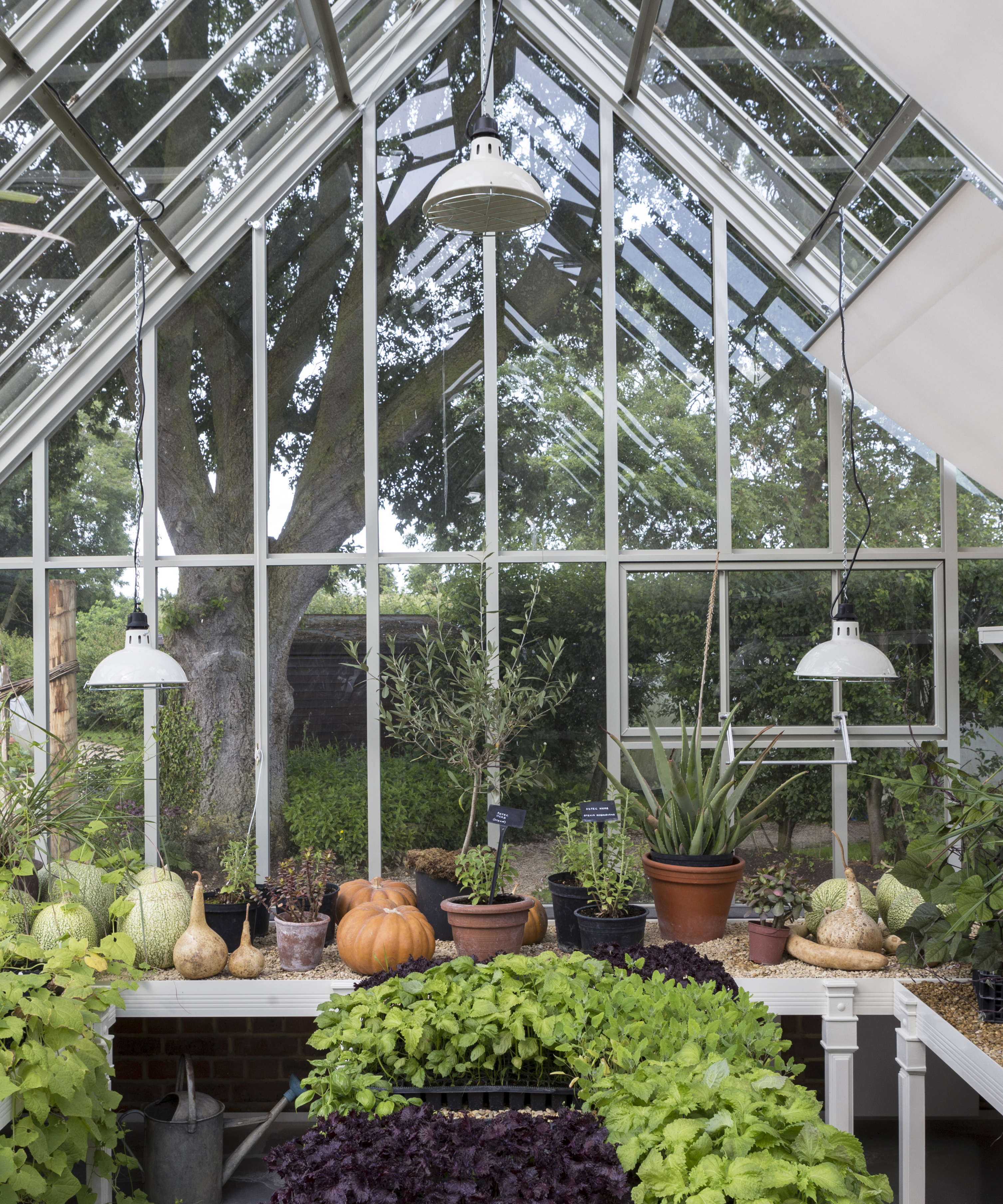
(Image credit: Future)
'A greenhouse is the stepping-off point for outdoor vegetable production. As well as raising tender crops including courgettes and outdoor cucumbers, you can kick-start runner beans, brassicas and even such root crops as carrots and beets,' advises Tom Barry, CEO of Hartley Botanic.
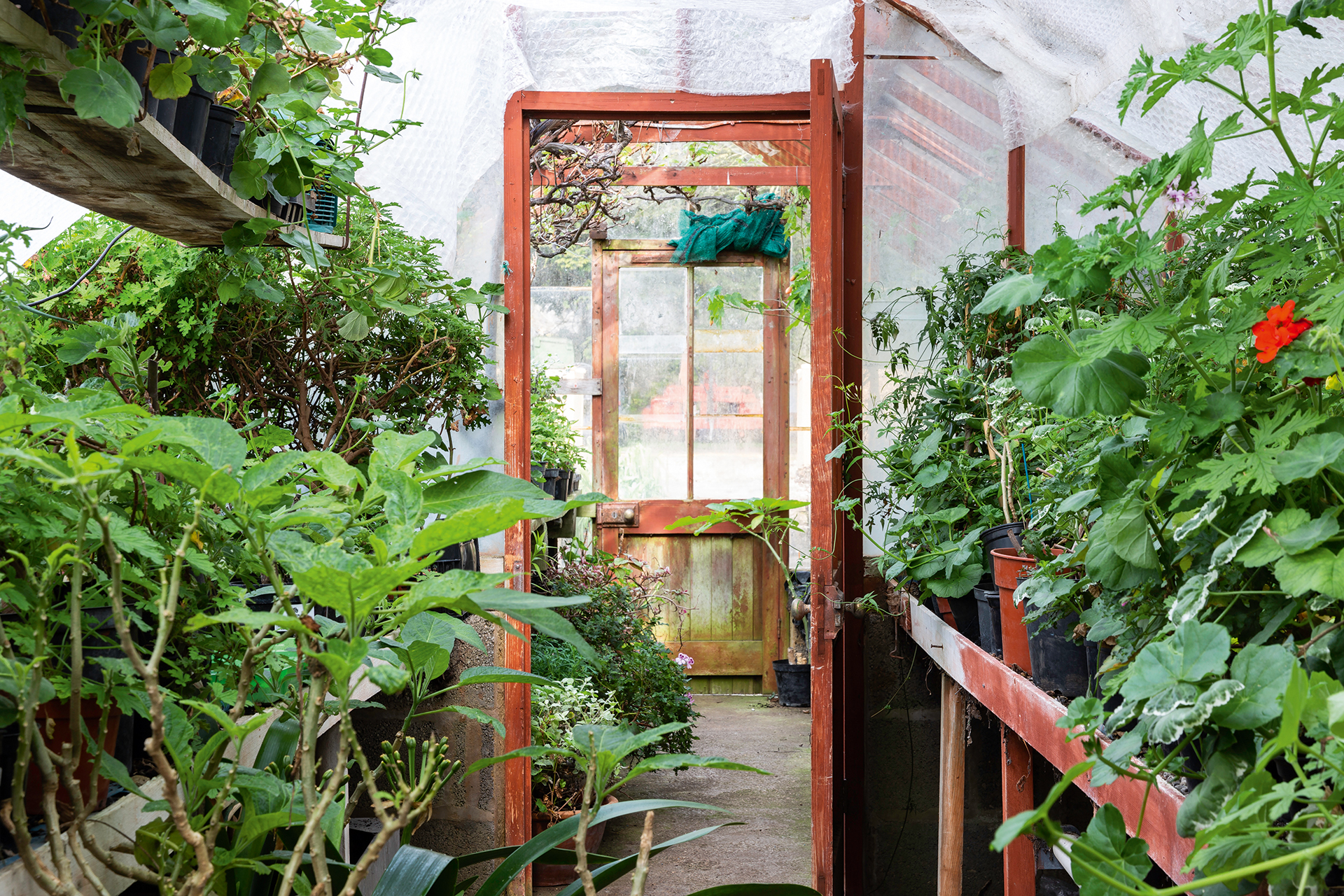
(Image credit: Future/Kasia Fiszer)
'Starting a vegetable garden under glass means you will have an abundance of absolutely delicious vegetables and fruit every time you step into your garden,' continues Tom Barry.
'When it comes to starting out, try edibles known to be easy to grow, such as tomatoes, and plan when you plant different crops so you can enjoy year-round production and supply. Your greenhouse will enable you to be significantly more productive in your growing year, than if you were purely growing outdoors, especially if you know the right growing techniques.'
9. Use containers for a vegetable garden in even the smallest spaces
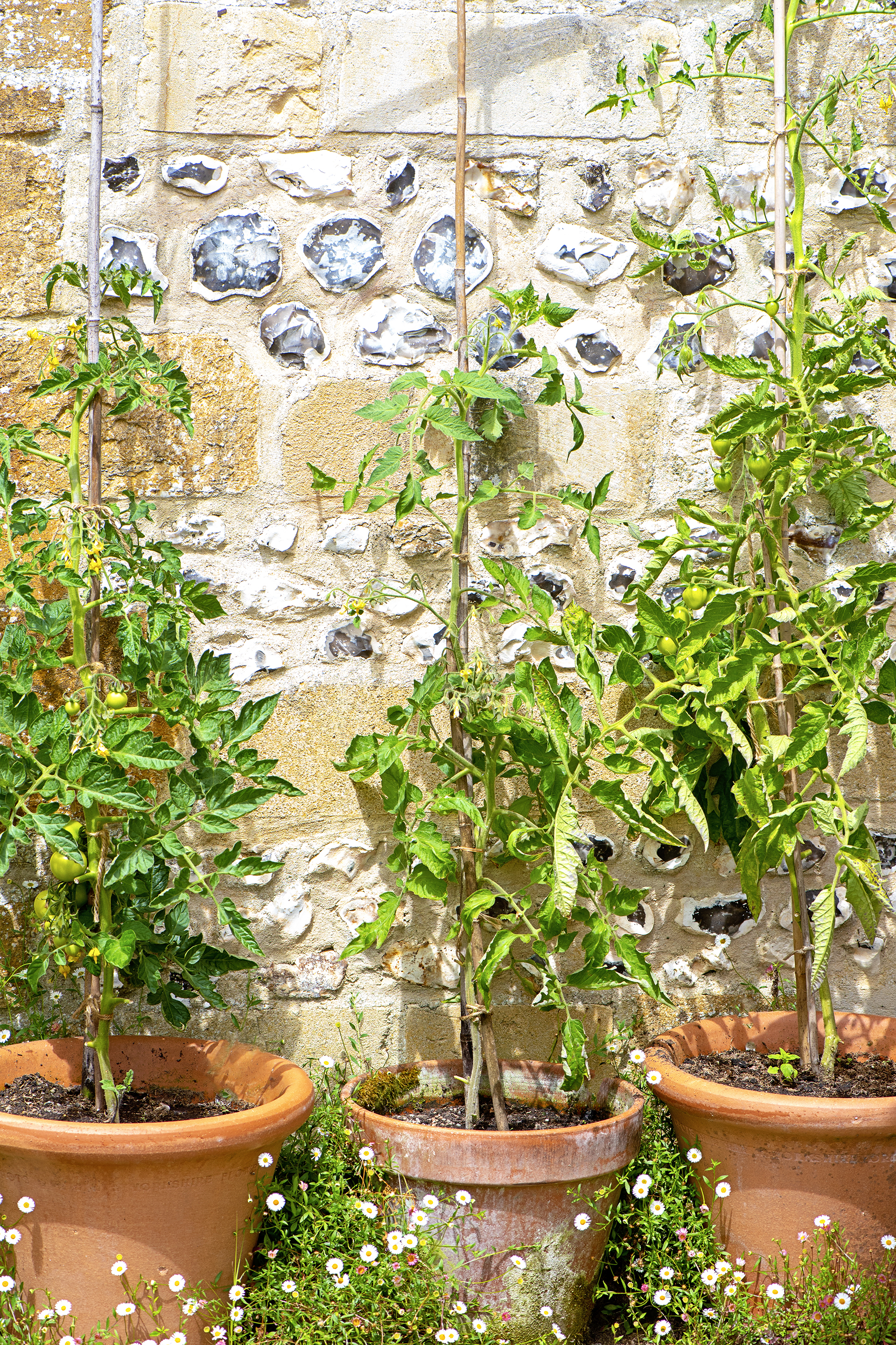
(Image credit: Getty Images)
If you're wondering 'what vegetables grow well in containers?' Then you'll be glad to know that most vegetables will grow well in containers so long as they are big enough. Salad vegetables, carrots, onions and tomatoes all grow well particularly well in containers though.
'A couple of pots of cut-and-come again leaves will give you fresh salads for months. Other stars of the kitchen container garden include chard and kale, structural plants such as globe artichokes,' says Aaron Bertlesen, vegetable garden and chef at Great Dixter. 'Plant edible flowers, such as scented-leaf pelargoniums, in pots. The variety Attar of Roses makes a wonderfully fragrant sorbet.'
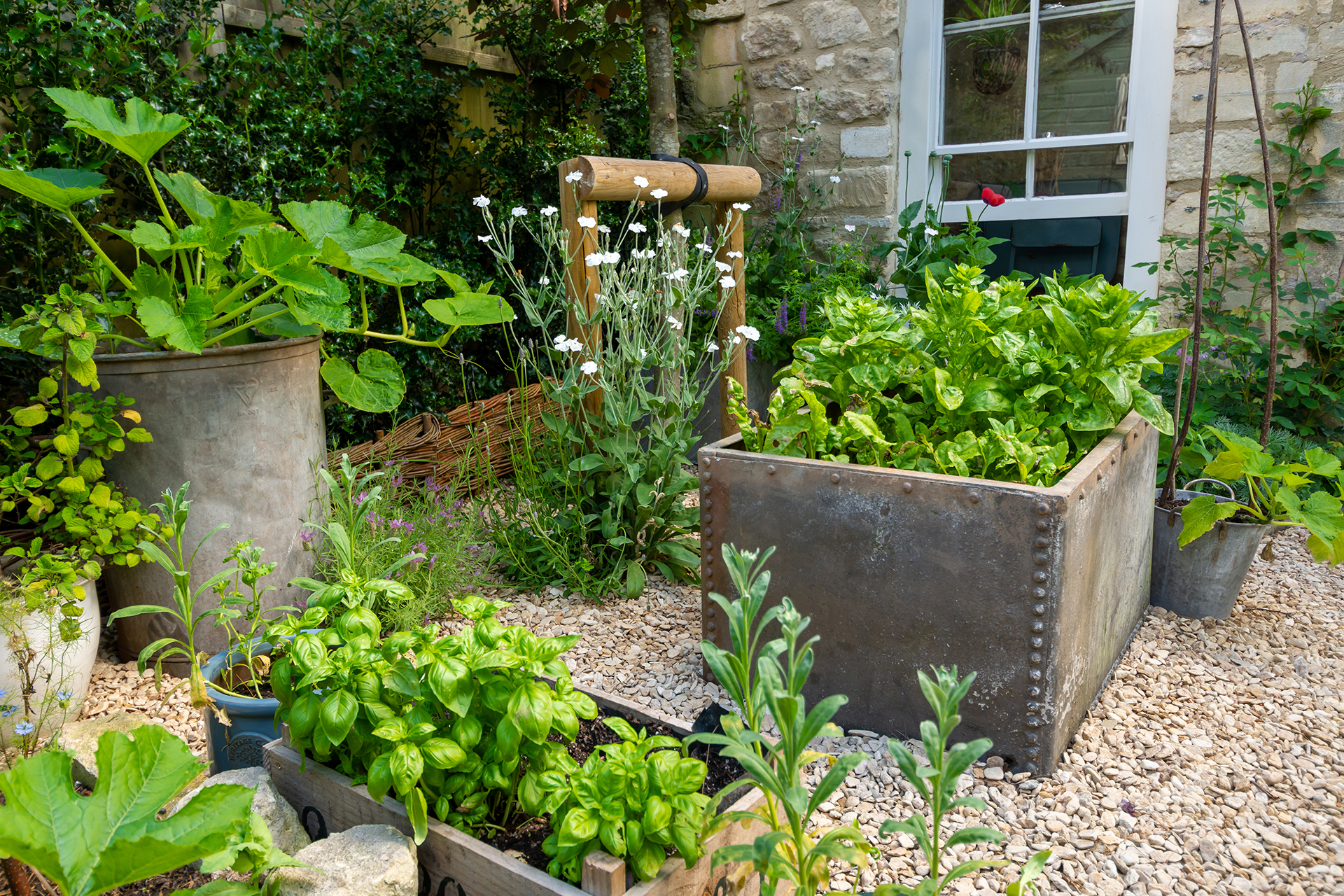
(Image credit: Peter Chatterton)
- See: Container gardening ideas – lush ways with garden plants, in planters and pots
10. Incorporate vegetables garden ideas into a patio planting scheme
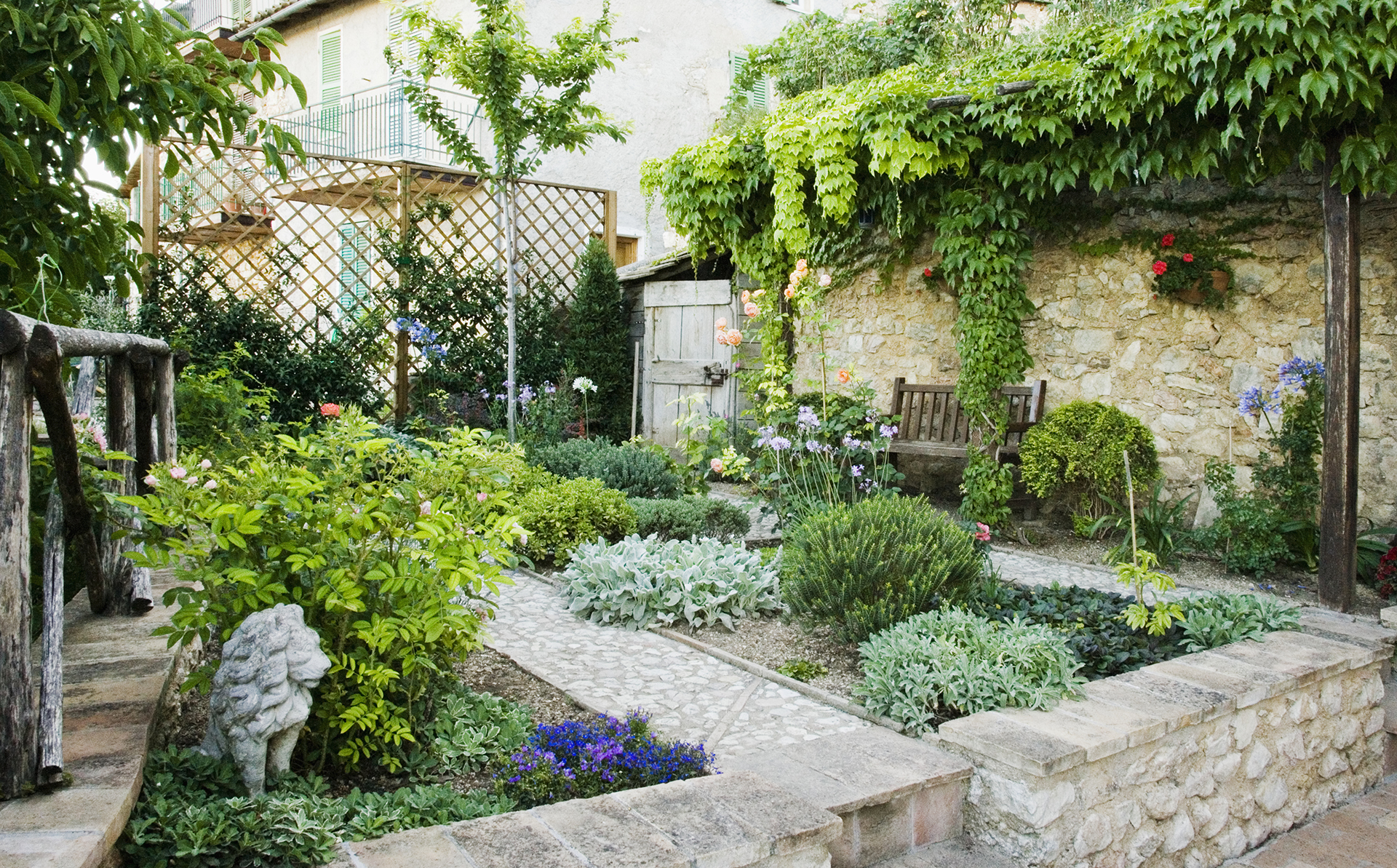
(Image credit: Getty Images)
Incorporating vegetable garden ideas into your patio design adds a productive angle to your patio space. Either create beds in amongst the gravel, tiles or flagstones, or opt for a few artfully placed pots brimming with your favorite vegetables.
'Decorative choices to tuck in include frilly lettuces and cabbages, architectural cardoons, runner beans and peas scrambling up teepees alongside shimmering stems of rainbow chard and clouds of feathery asparagus and fennel,' suggests Leigh Clapp.
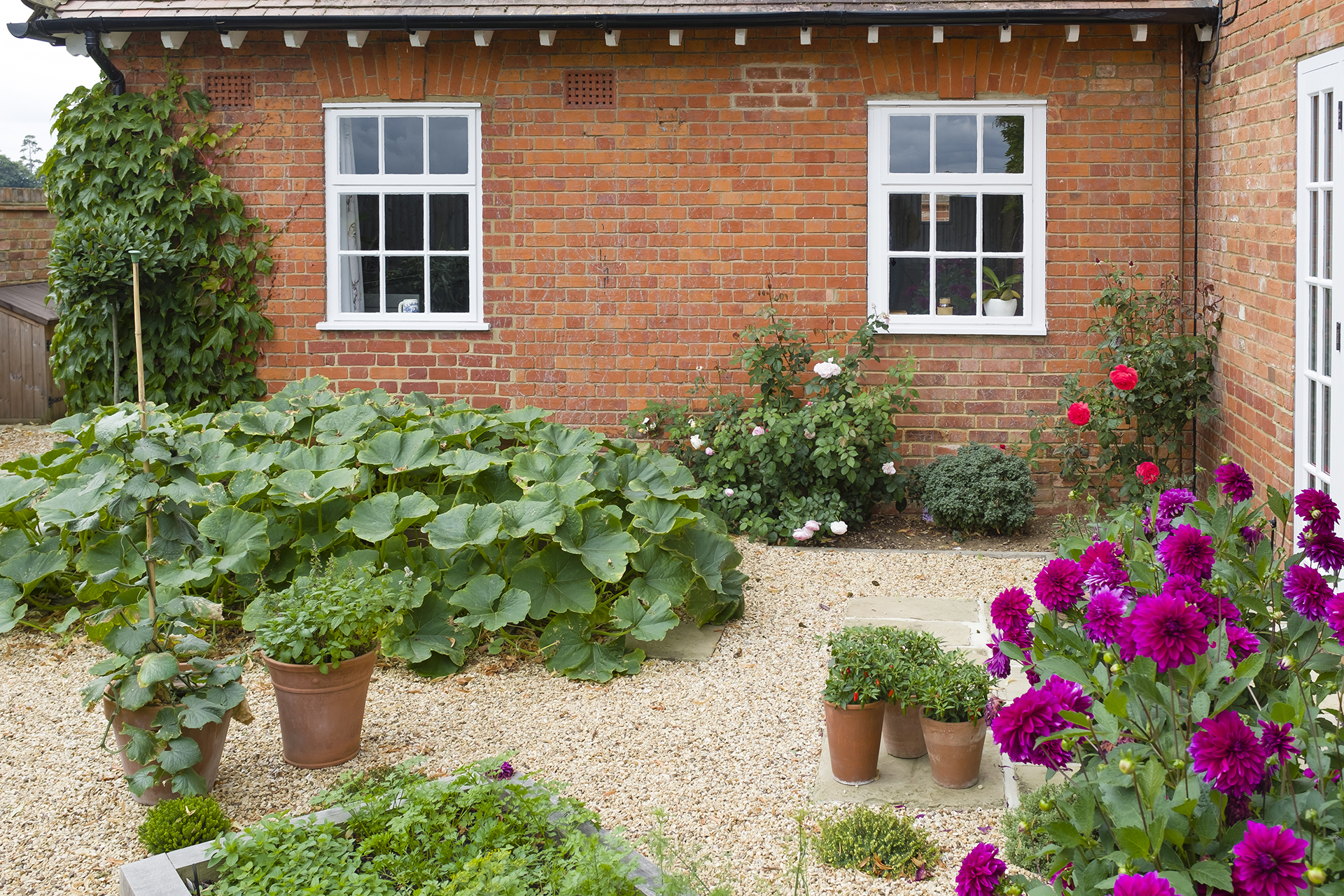
(Image credit: Getty Images)
11. Incorporate fruit trees into your vegetable garden
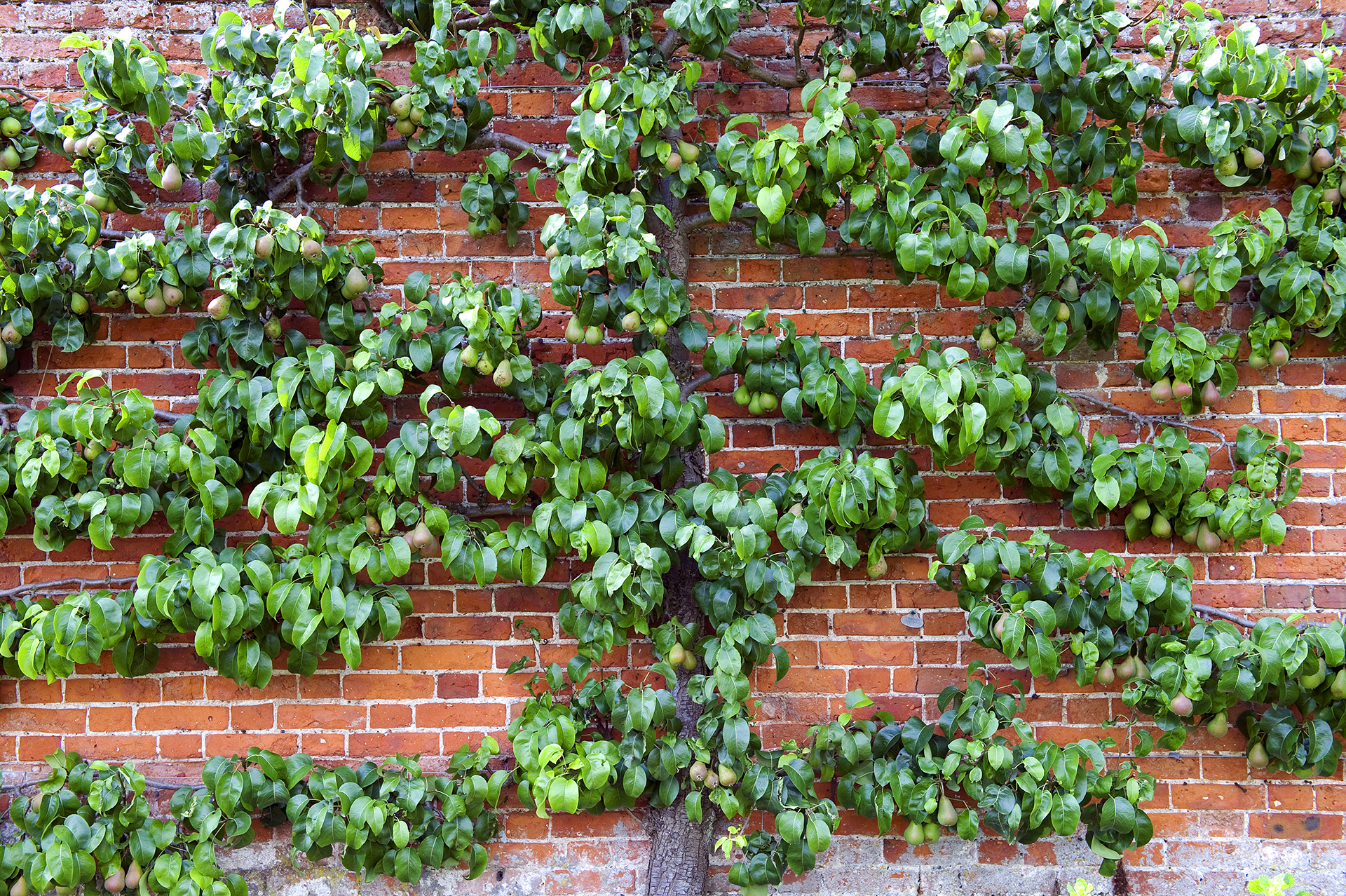
(Image credit: Getty Images)
Most vegetable plants are fairly small and low to the ground, meaning your vegetable patch can lack the architectural beauty of other areas of your garden. Adding fruit trees is a great way to add height and structure to your space and as such also provide visual interest.
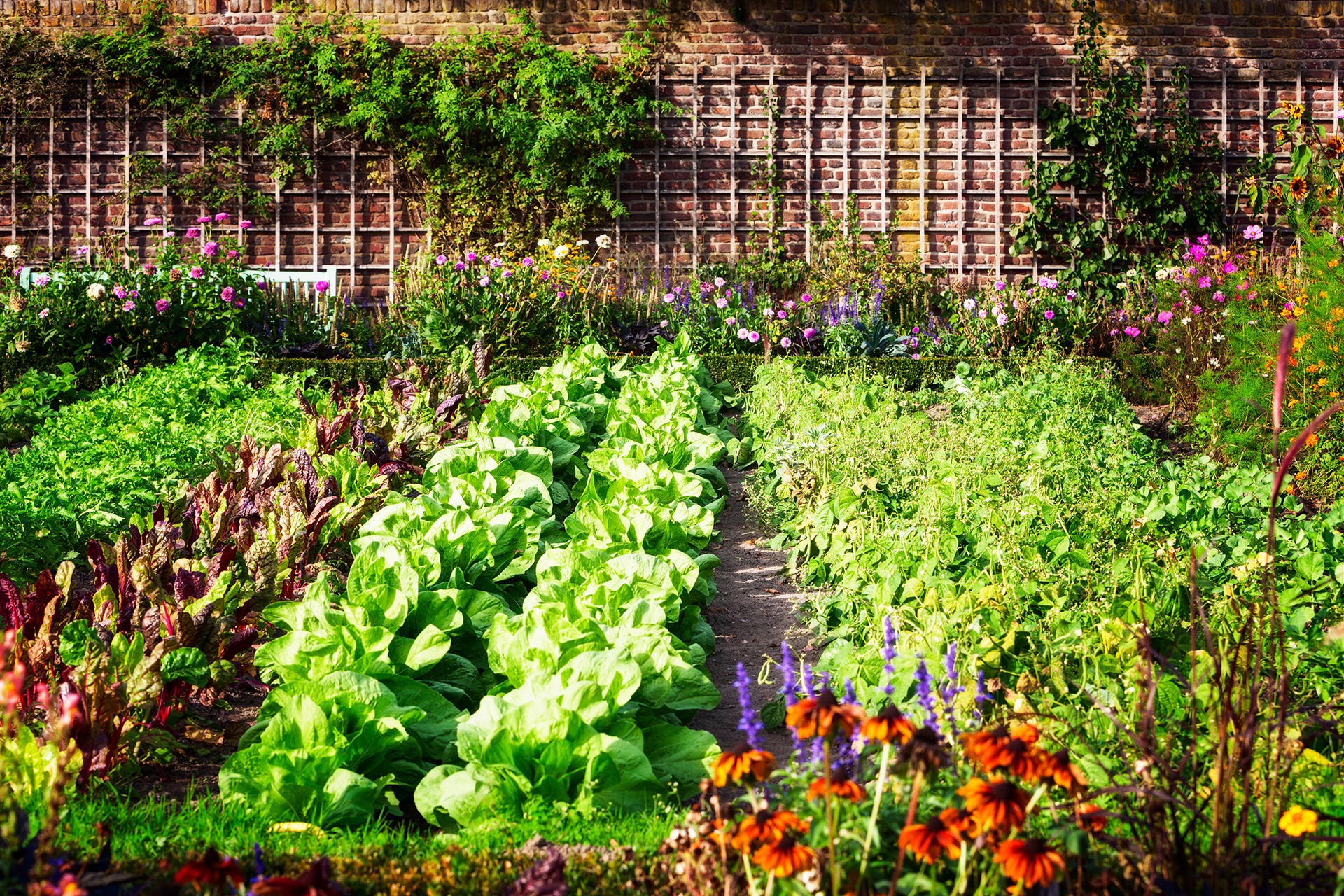
(Image credit: Getty Images)
Whether you grow them in the ground, pots or as espalliers against a wall, fruit trees also diversify your veg plot, encouraging wildlife and pollinators into your vegetable garden, helping to control pests.
12. Use vegetable garden ideas to encourage wildlife and reduce environmental impact
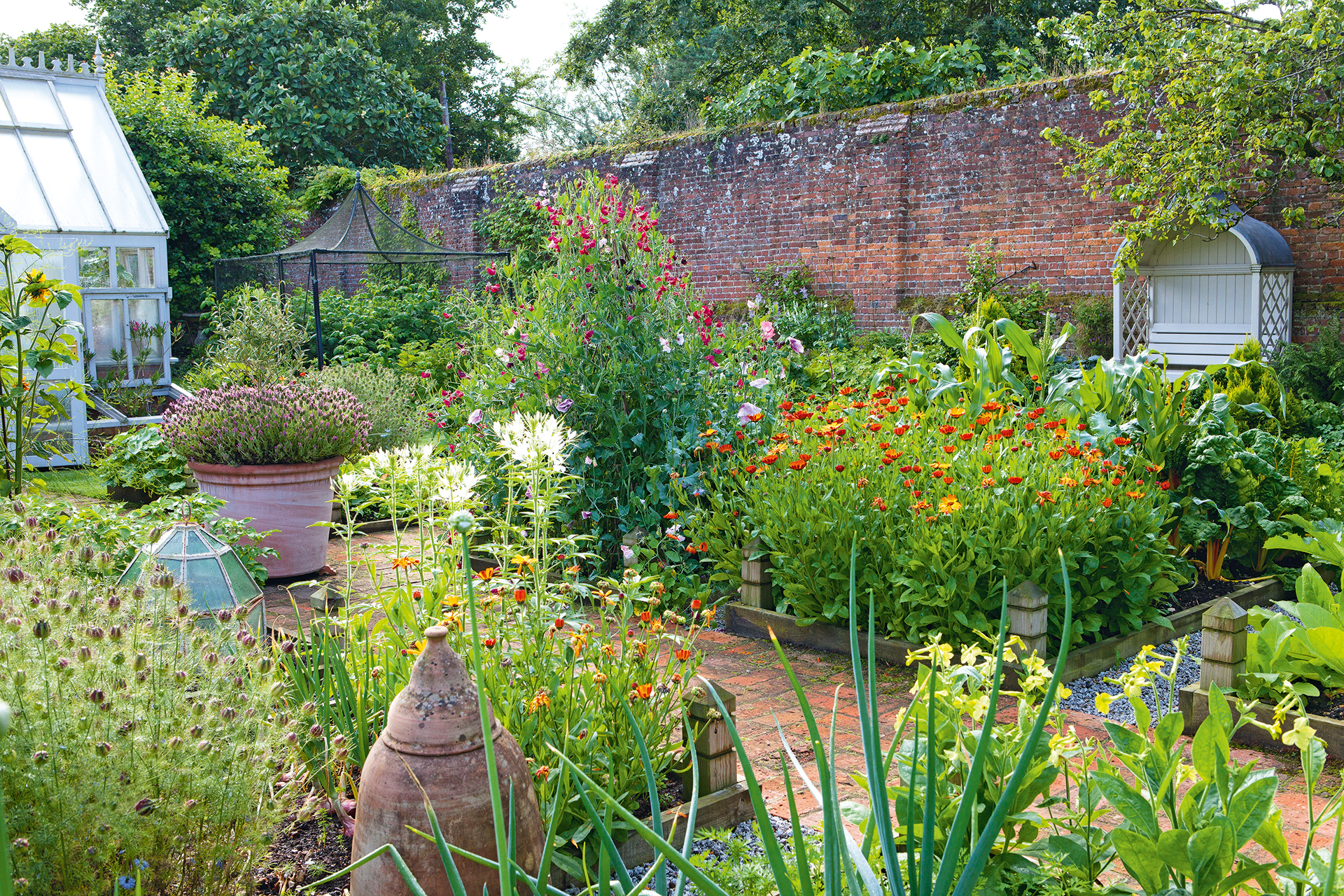
(Image credit: Future/Leigh Clapp)
'Overly clean plots with no flowers do little to help fruit production or even some vegetables, especially courgette and marrow. Mono-cropping must be avoided everywhere in our gardens,' advises Rosy Hardy, owner of plantsman's nursery Hardy's Plants.
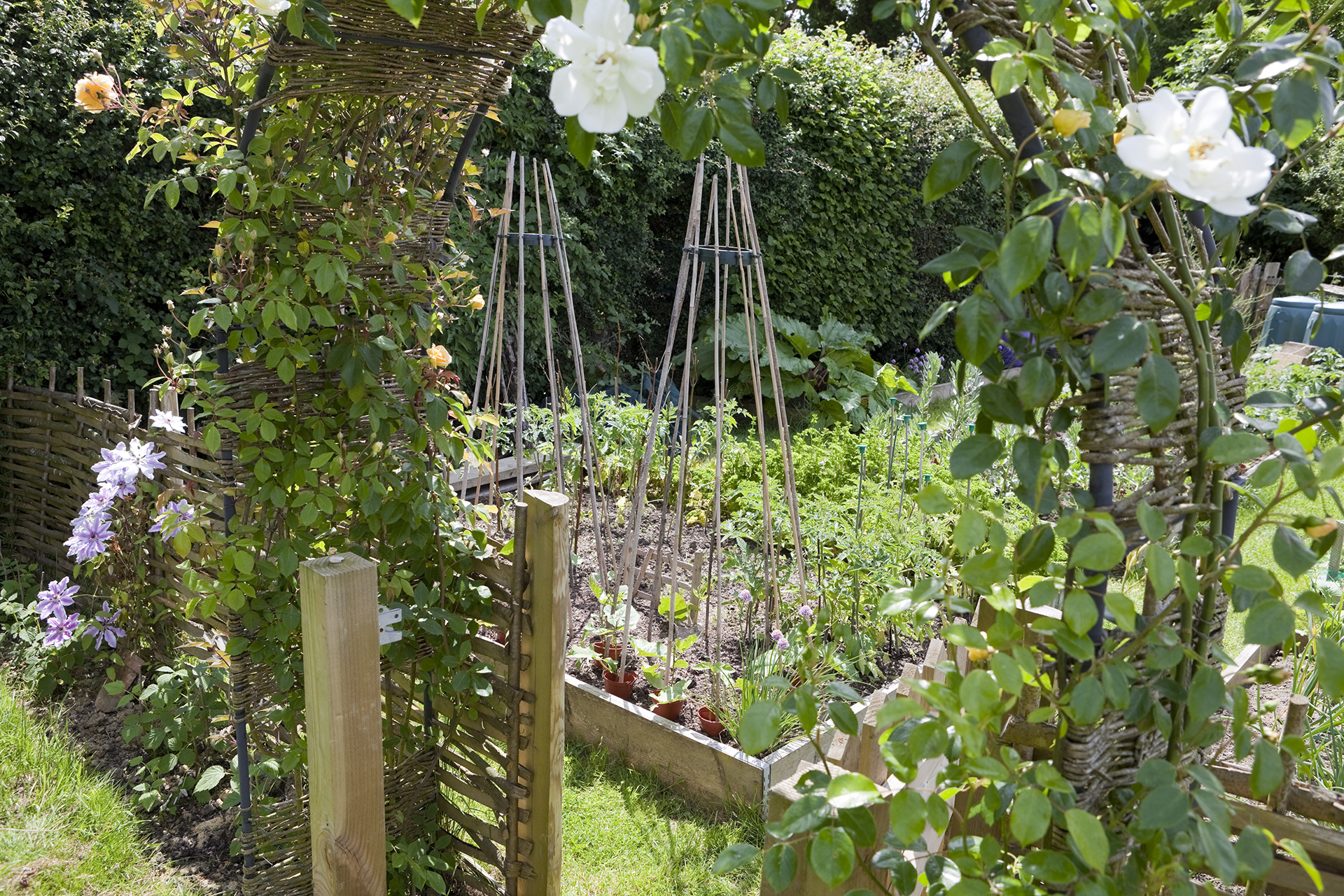
(Image credit: Getty Images)
'Mix some crops, such as chard and corn, in among the flowers and share any excess seeds with friends and neighbours so you only grow what you need,' says Leigh Clapp.
'Garden organically and nourish yourself with fresh food and the beauty of flowers, while being cognisant of the environment. Where possible, grow vegetables, fruit and herbs alongside flowers.'
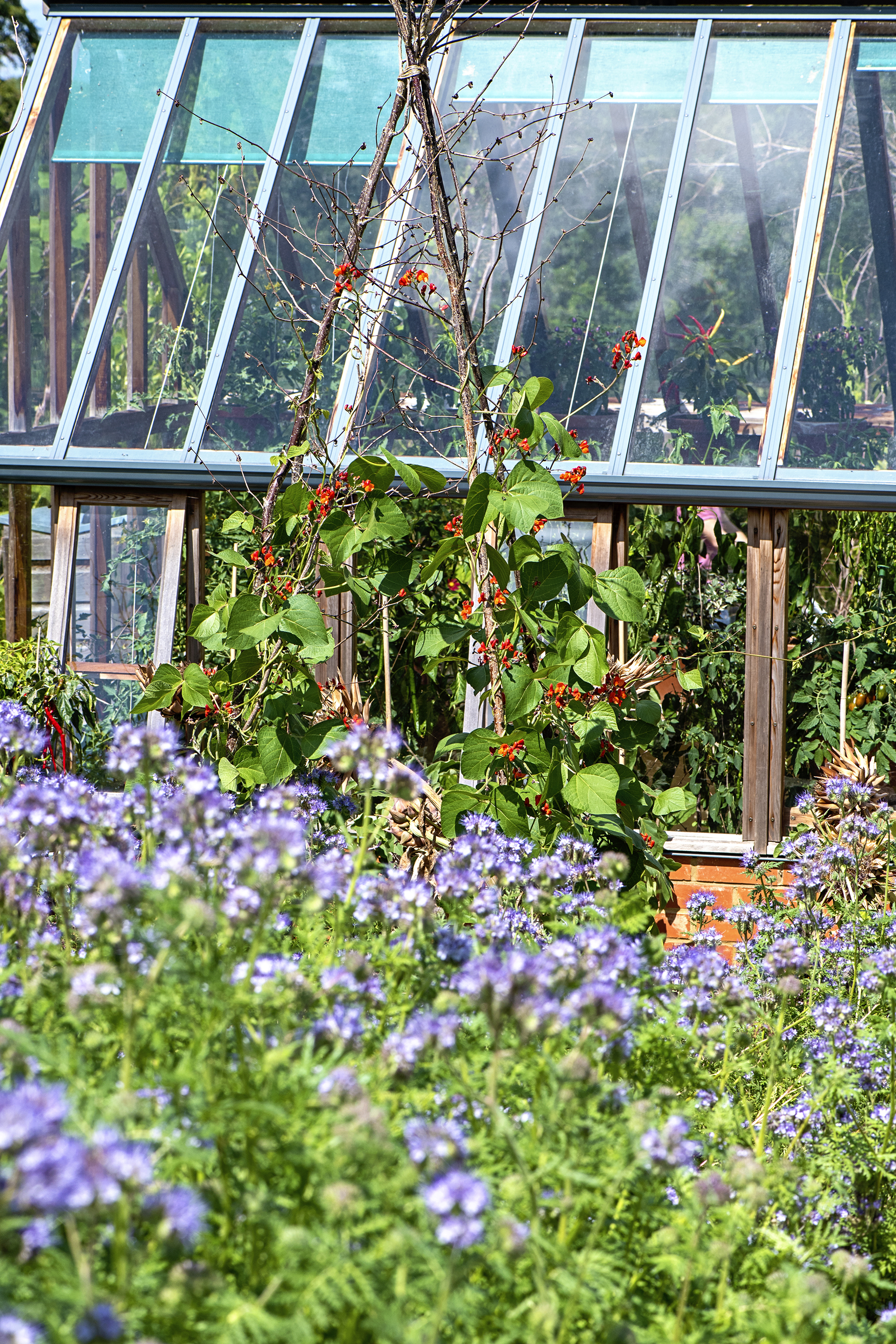
(Image credit: Getty Images)
How do I layout my vegetable garden?
Lay out your vegetable garden by creating a series of borders – whether raised, in the ground or in pots – separated by paths for a traditional vegetable garden.
'Unless crops need special protection, it can be helpful to mix the plantings, as a large area of a single crop attracts pests and the mix of different edibles and ornamentals confuses them. It is helpful to draw the design on paper first before marking out or planting,' advises Leigh Clapp.
'For in-ground gardens, tall vegetables, like corn, should be planted on the north side of the garden so they don't shade smaller plants. Medium sized plants (tomatoes, peppers, cabbage) should be in the center of the garden, and small plants (carrots, lettuces, radishes) should be planted on the south side of the garden,' suggests Amy Enfield, Horticulturist for Bonnie Plants.
When can I start planting my vegetable garden?
You can start planting your vegetable garden from early winter throughout spring, though you can grow vegetables all year around – so long as you pick the right variety.
'Cool-season vegetables, like cabbage, kale, broccoli, cauliflower, and Swiss Chard, can be planted 4 weeks or more before the last spring frost depending on the plant,' suggests Amy Enfield, Horticulturist for Bonnie Plants. 'For garden main-stays, like tomatoes, peppers, cucumbers, and melons, planting starts once all chances of frost have passed. Temperatures at night should be consistently above 50 degrees before warm-season vegetables are planted outside. In the south, warm-season planting can be late March through early April, while in the North, mid-May through early-June are usually the best time to start planting. '
'You can always ask your own state's cooperative extension service to answer questions on when to start vegetable seeds and what types of veggies grow best in your area,' advises Idelle Fisher from Sandia Seeds.
What vegetables grow best together?
There are lots of vegetables that grow best together. From carrots and onions to leeks and beets, companion planting can boost the productivity of your space and is definitely worth considering when planning your vegetable garden ideas.
World's Best Vegetable Gardening Ideas
Source: https://www.homesandgardens.com/ideas/vegetable-garden-ideas
Posted by: mcleanyoureput.blogspot.com

0 Response to "World's Best Vegetable Gardening Ideas"
Post a Comment